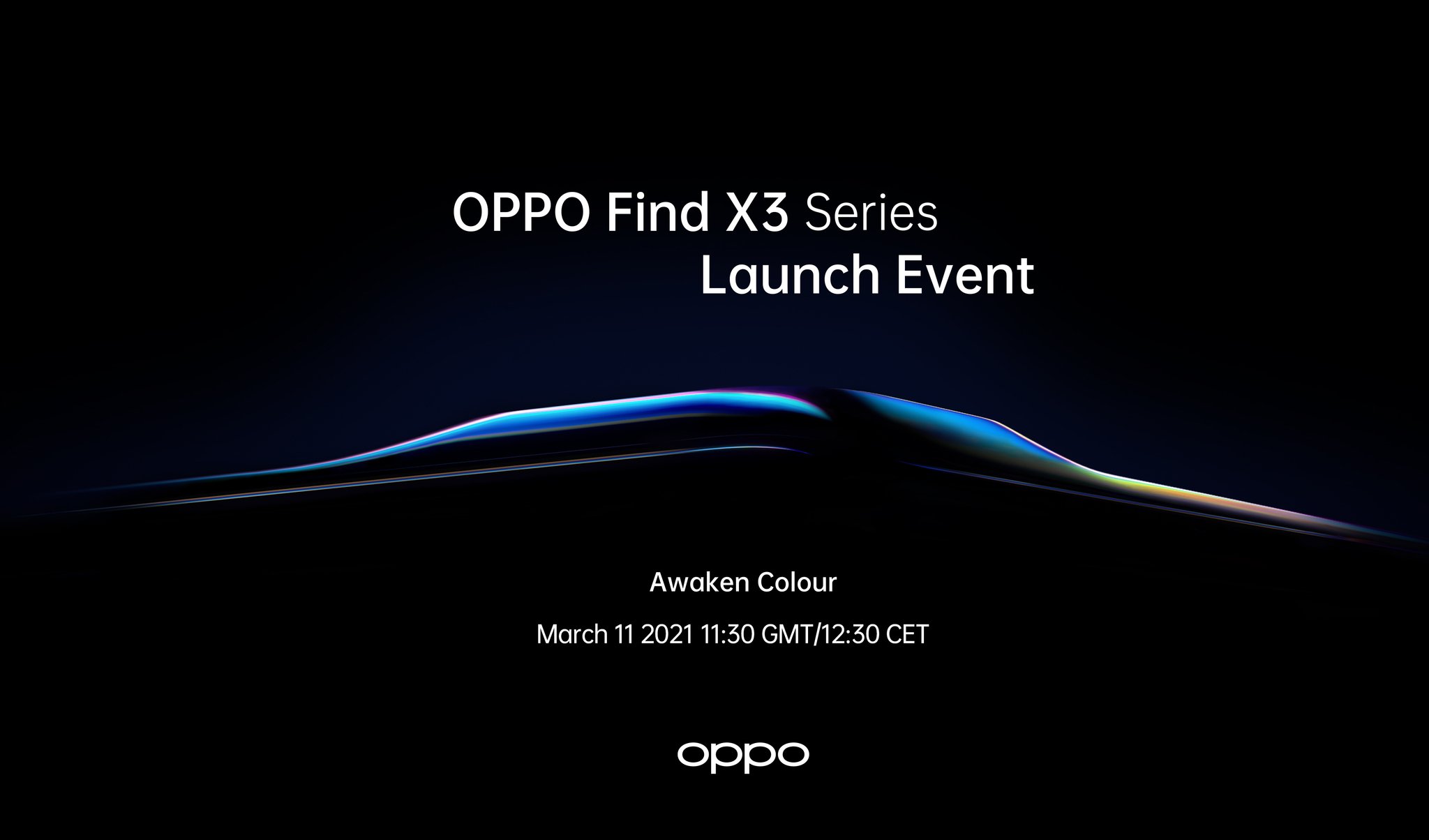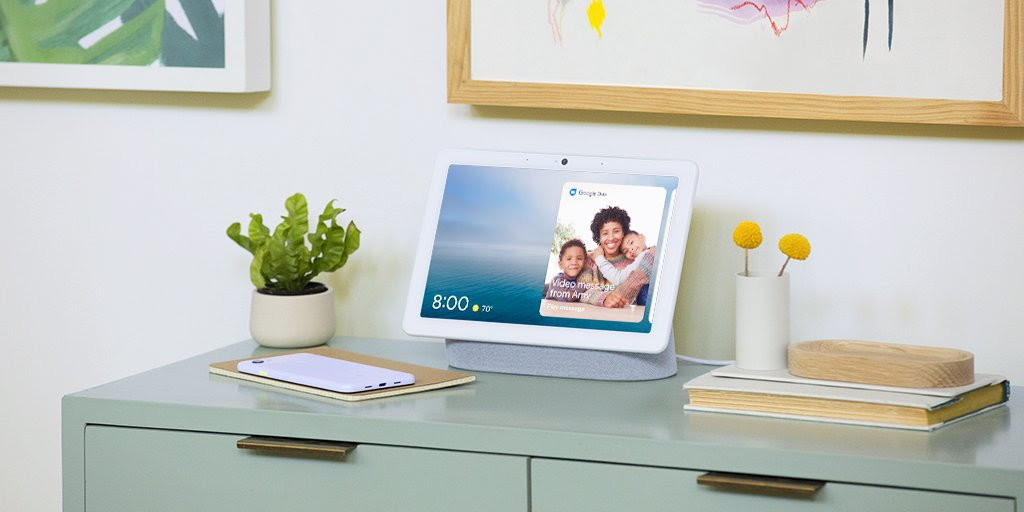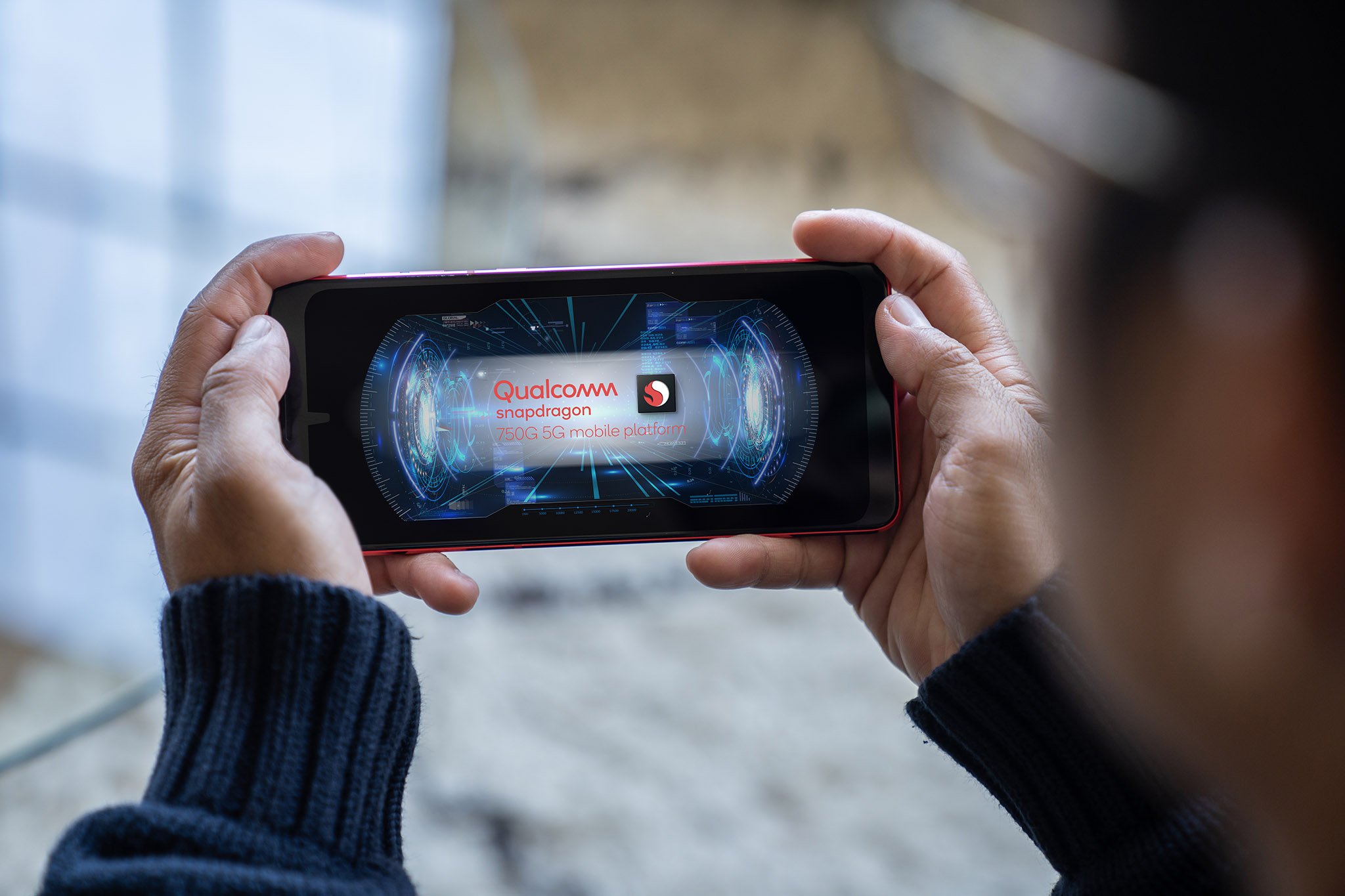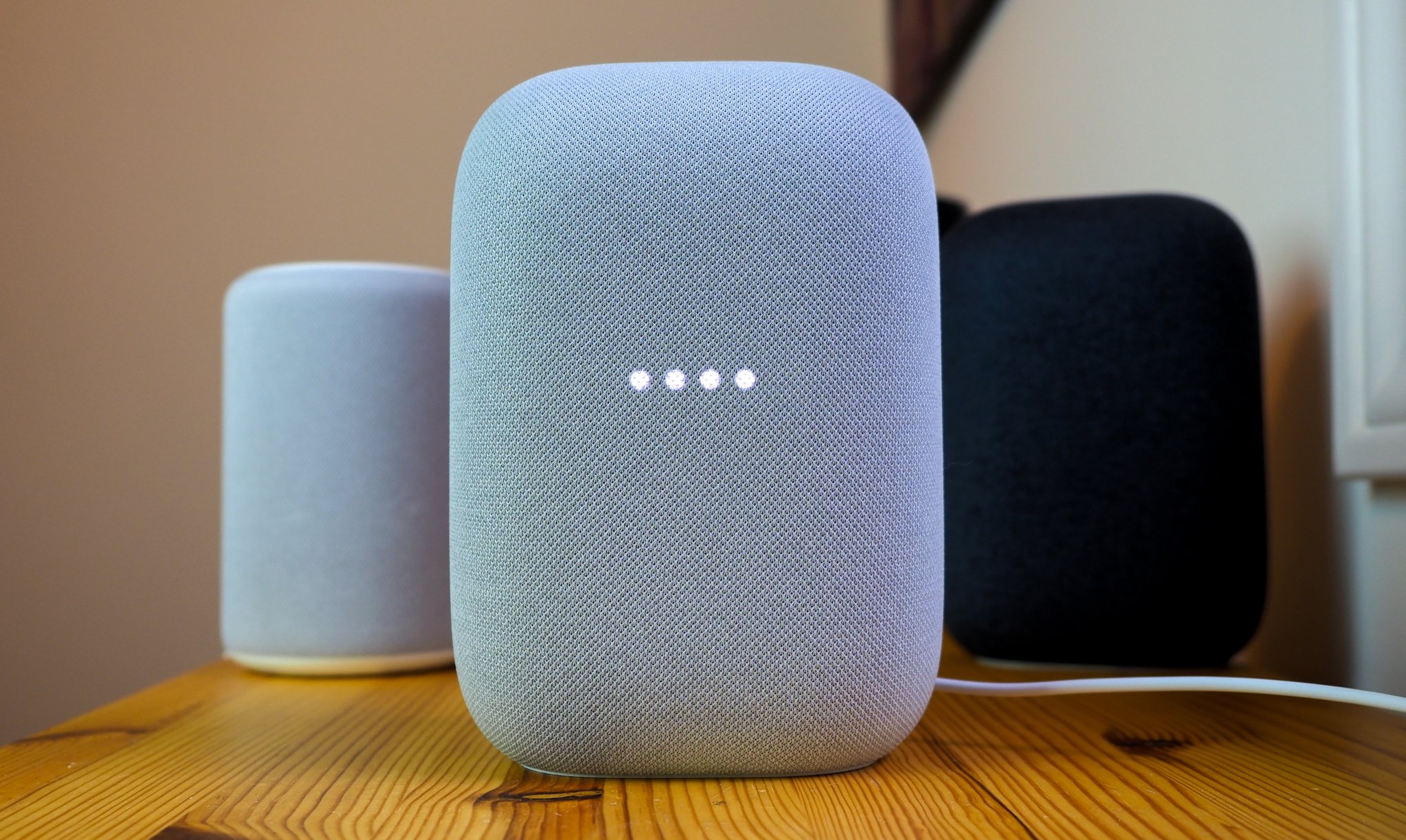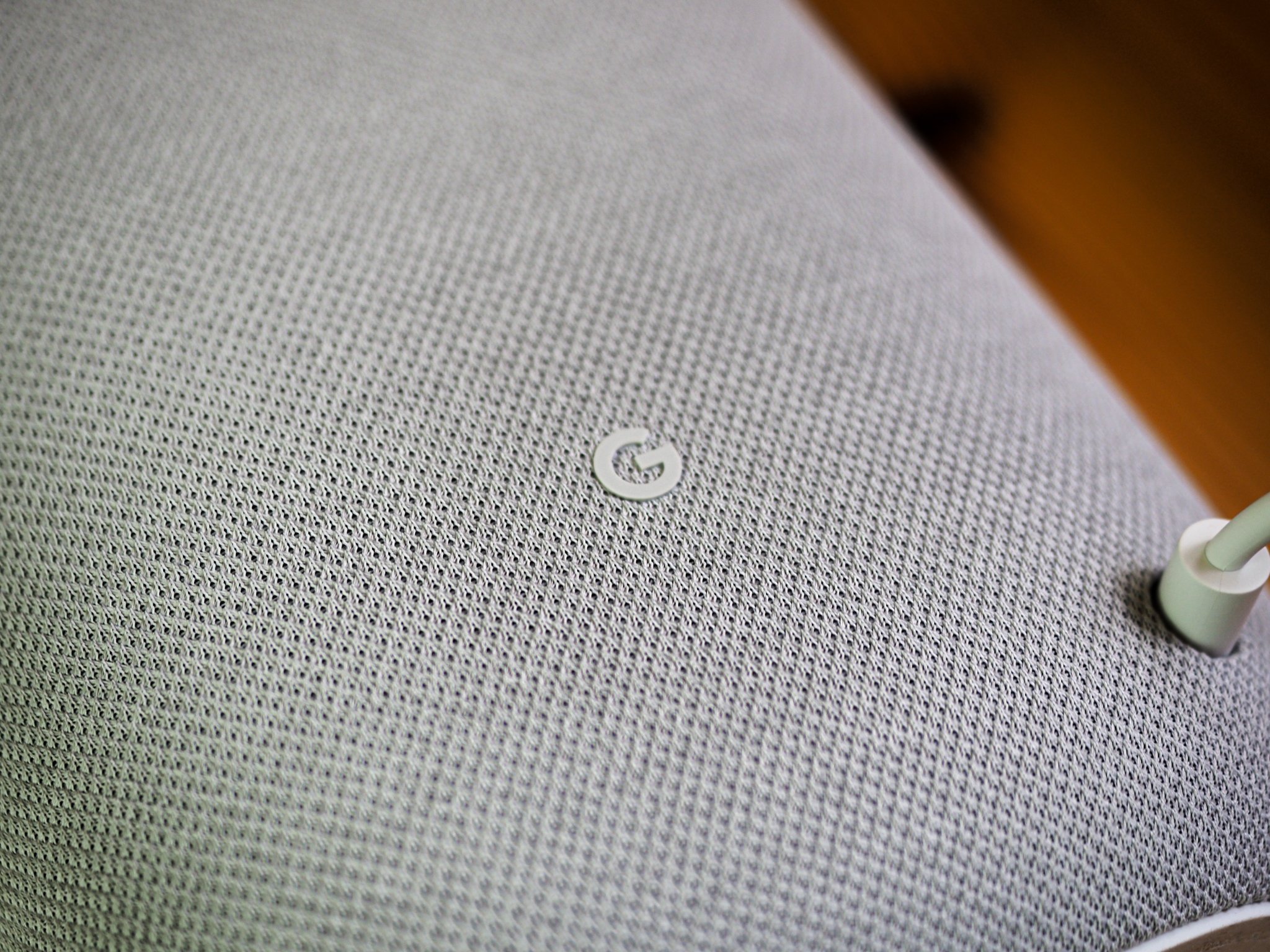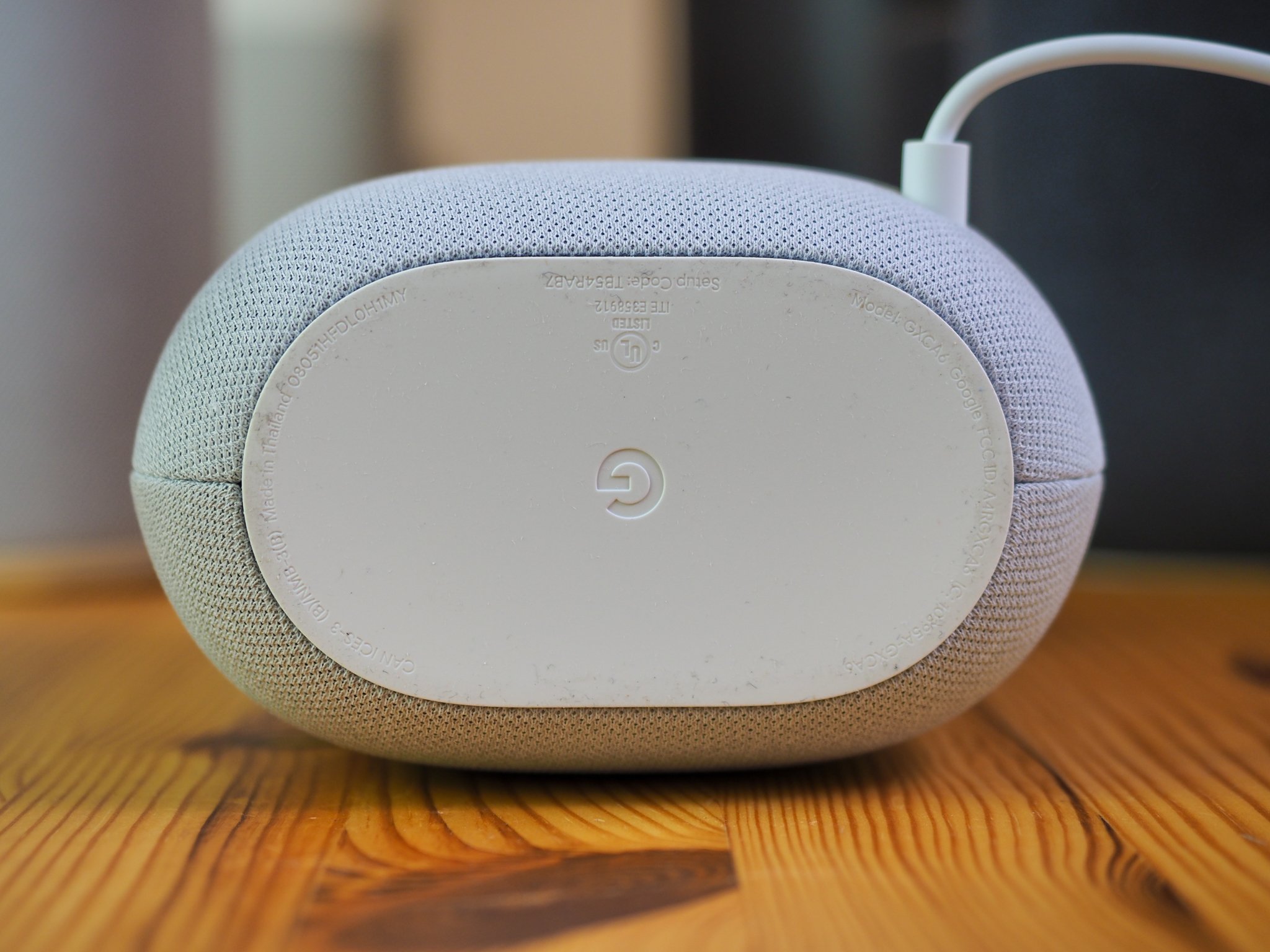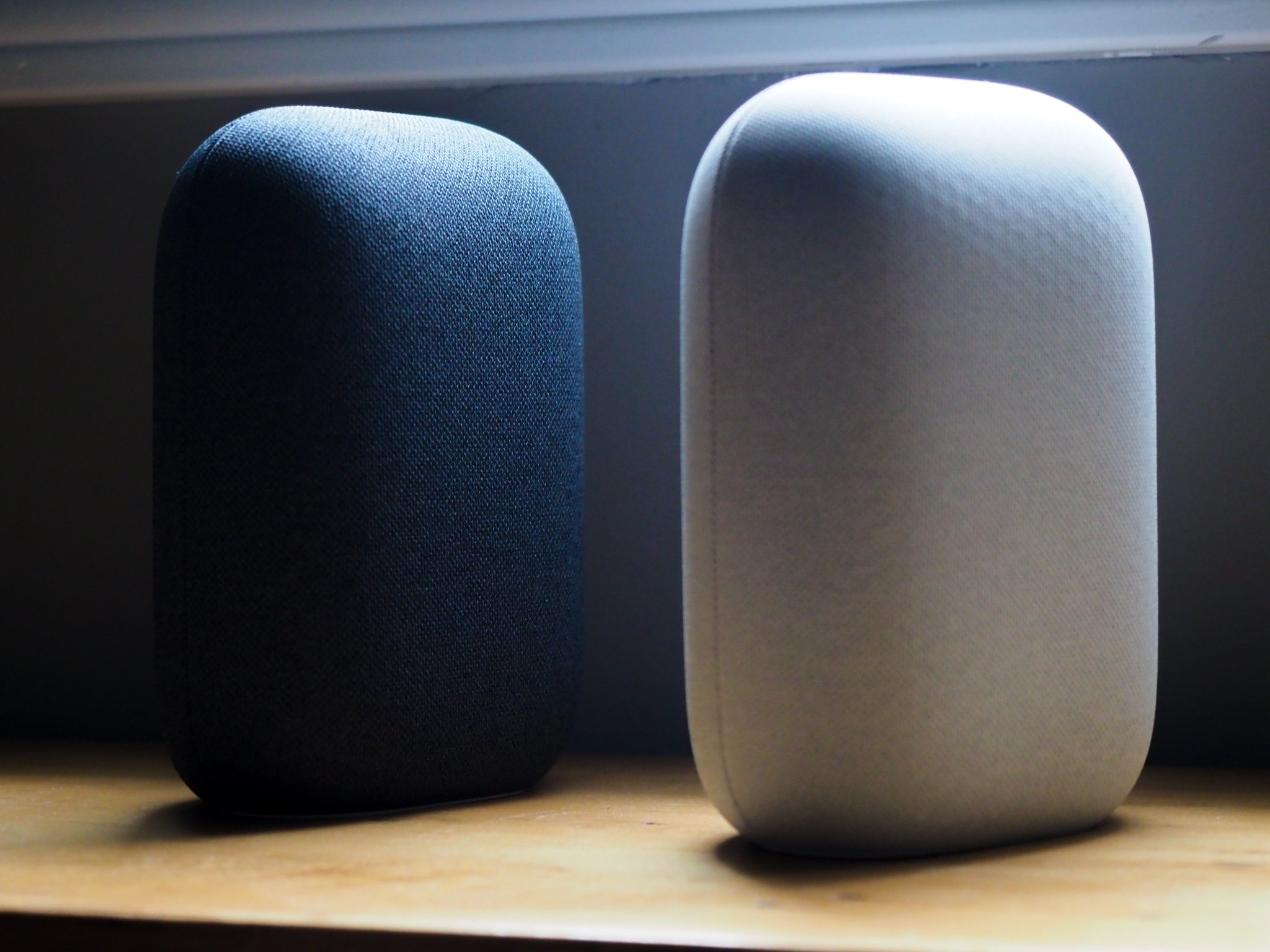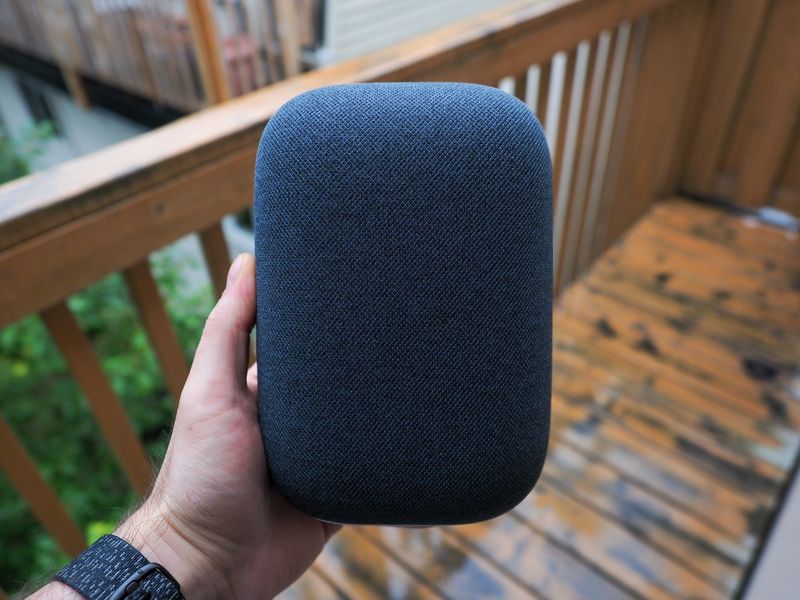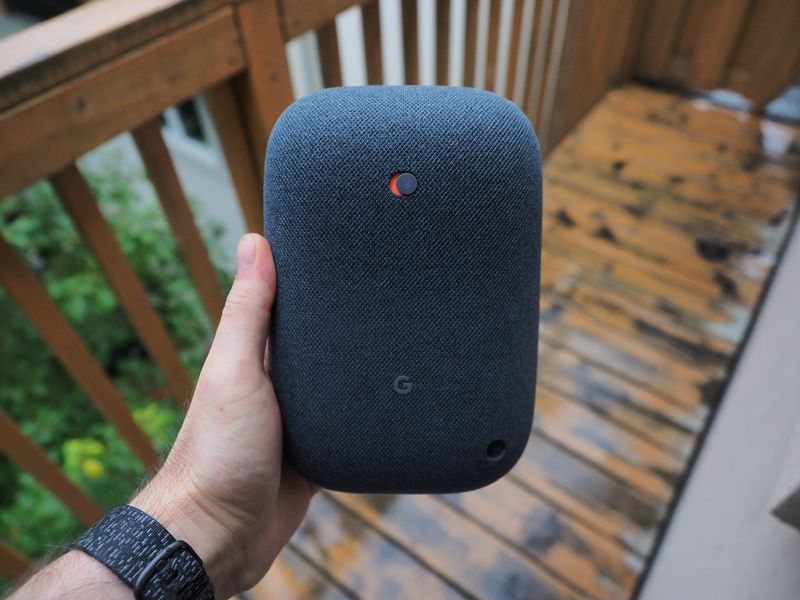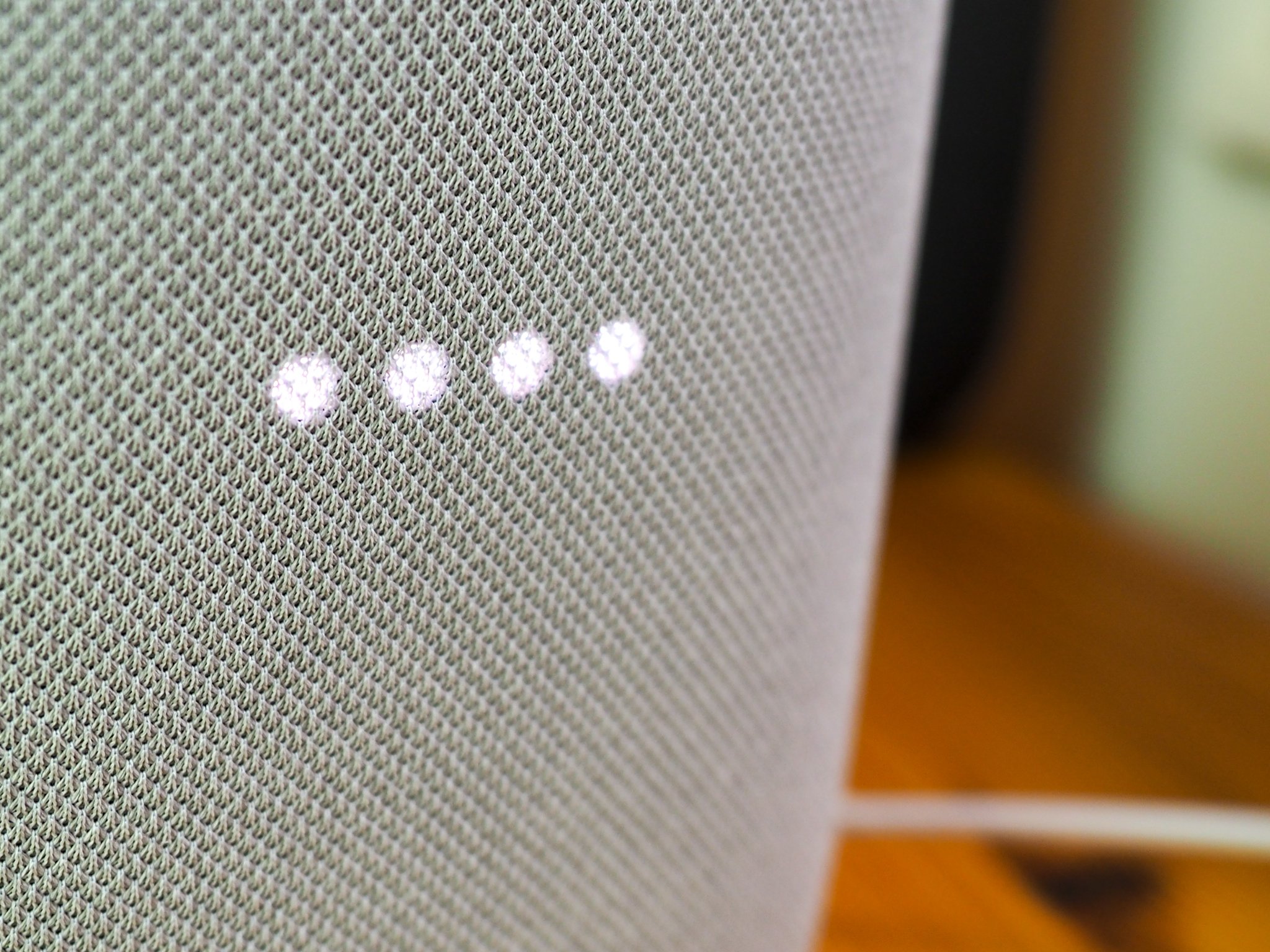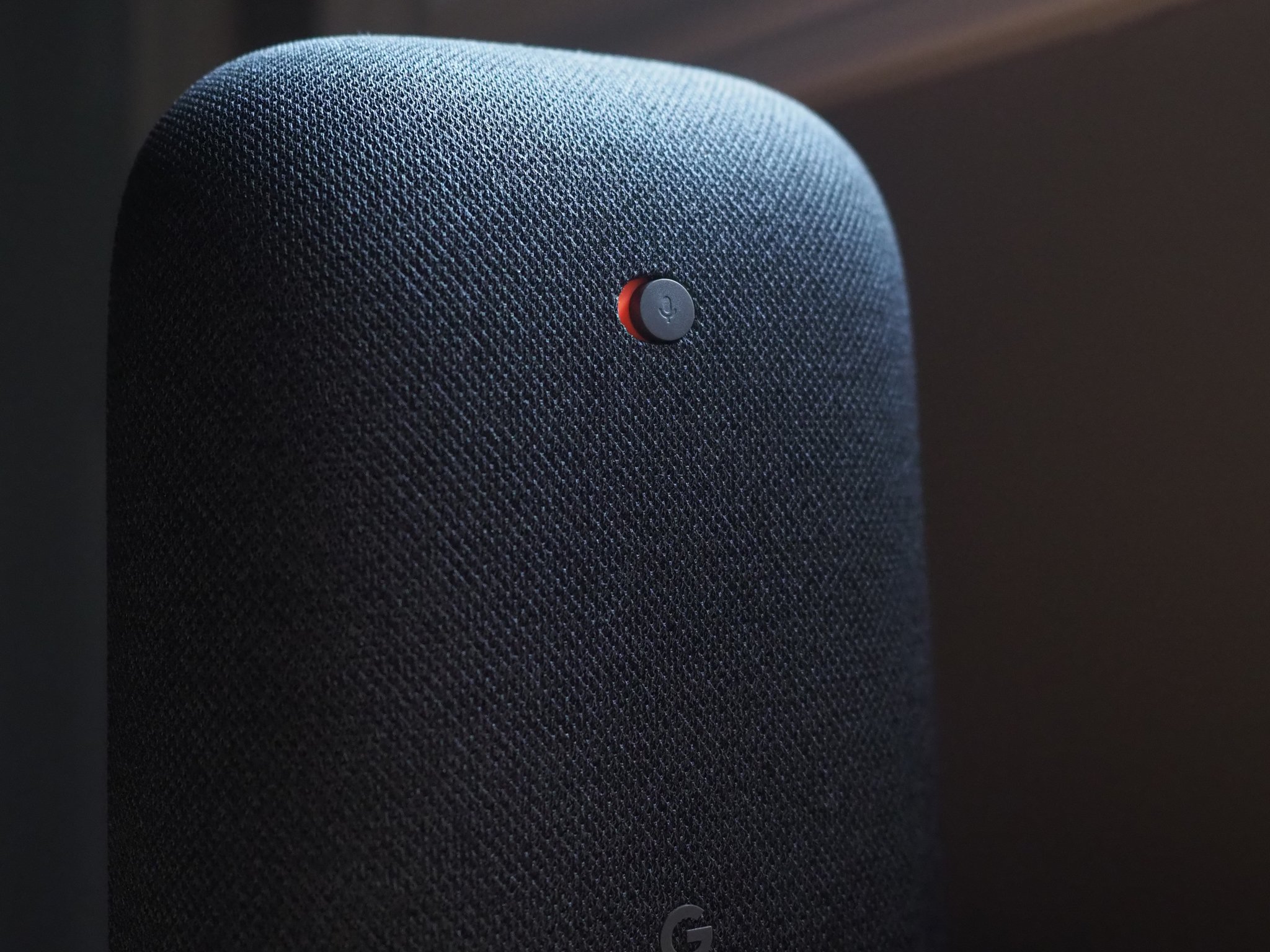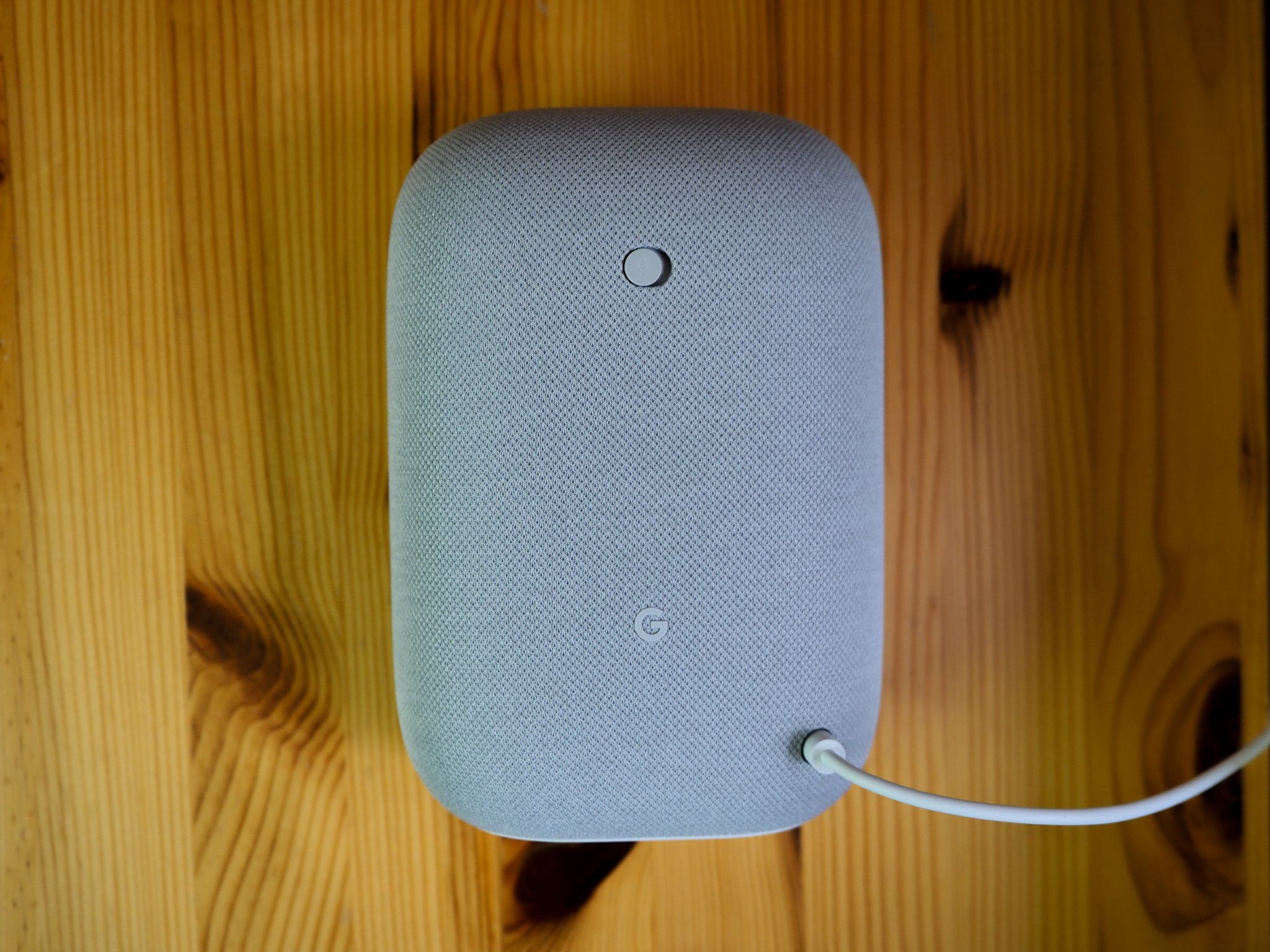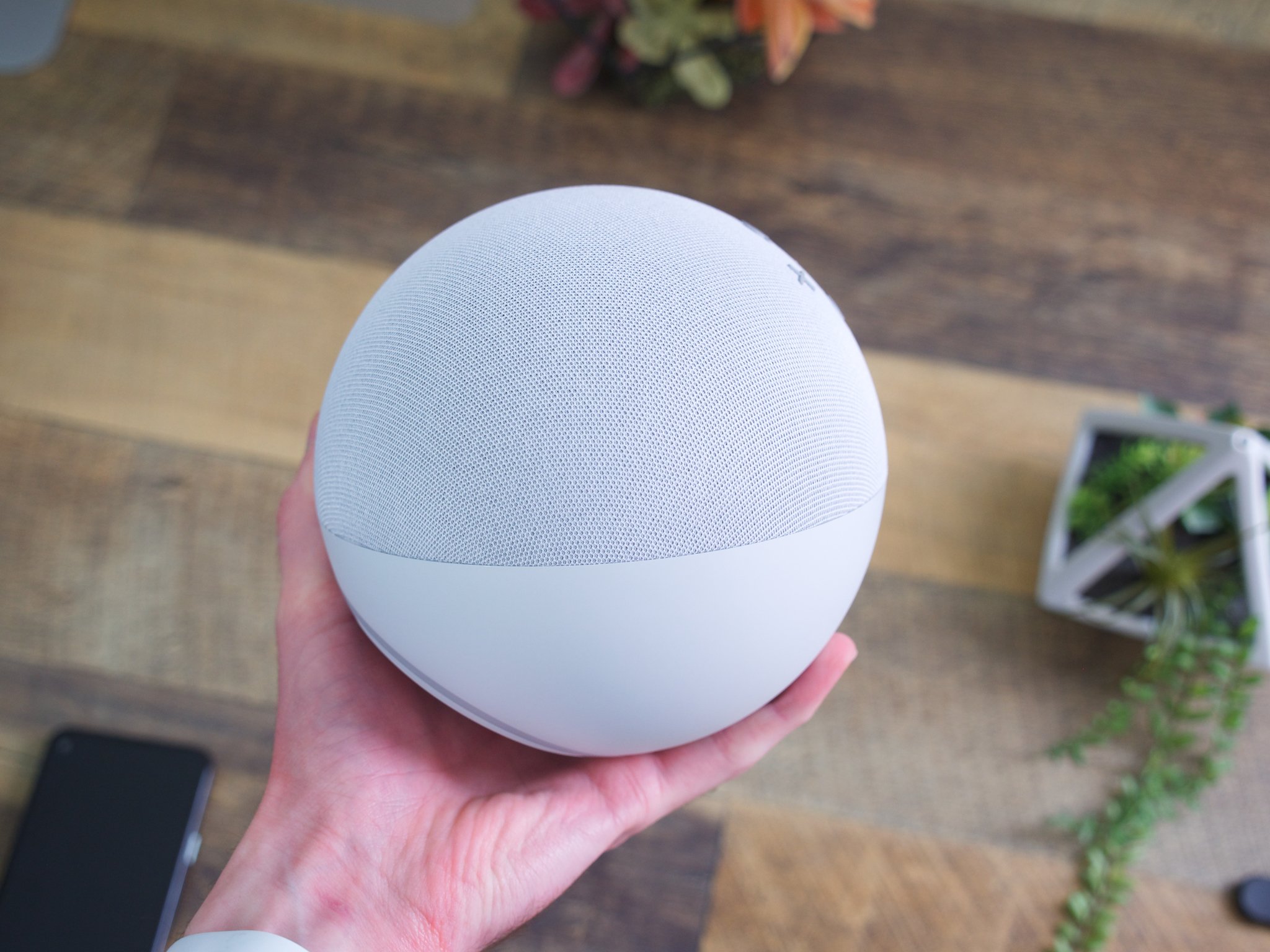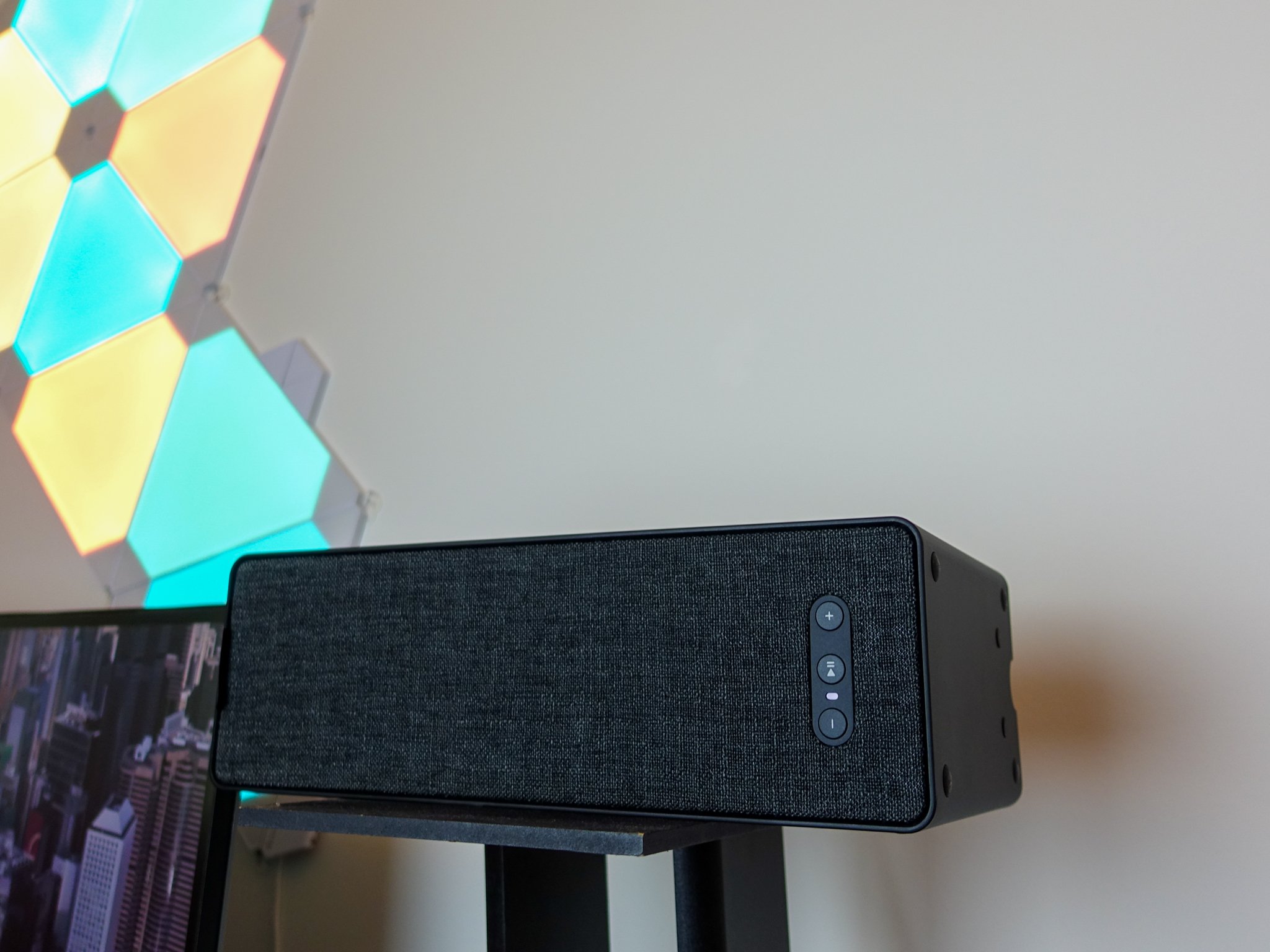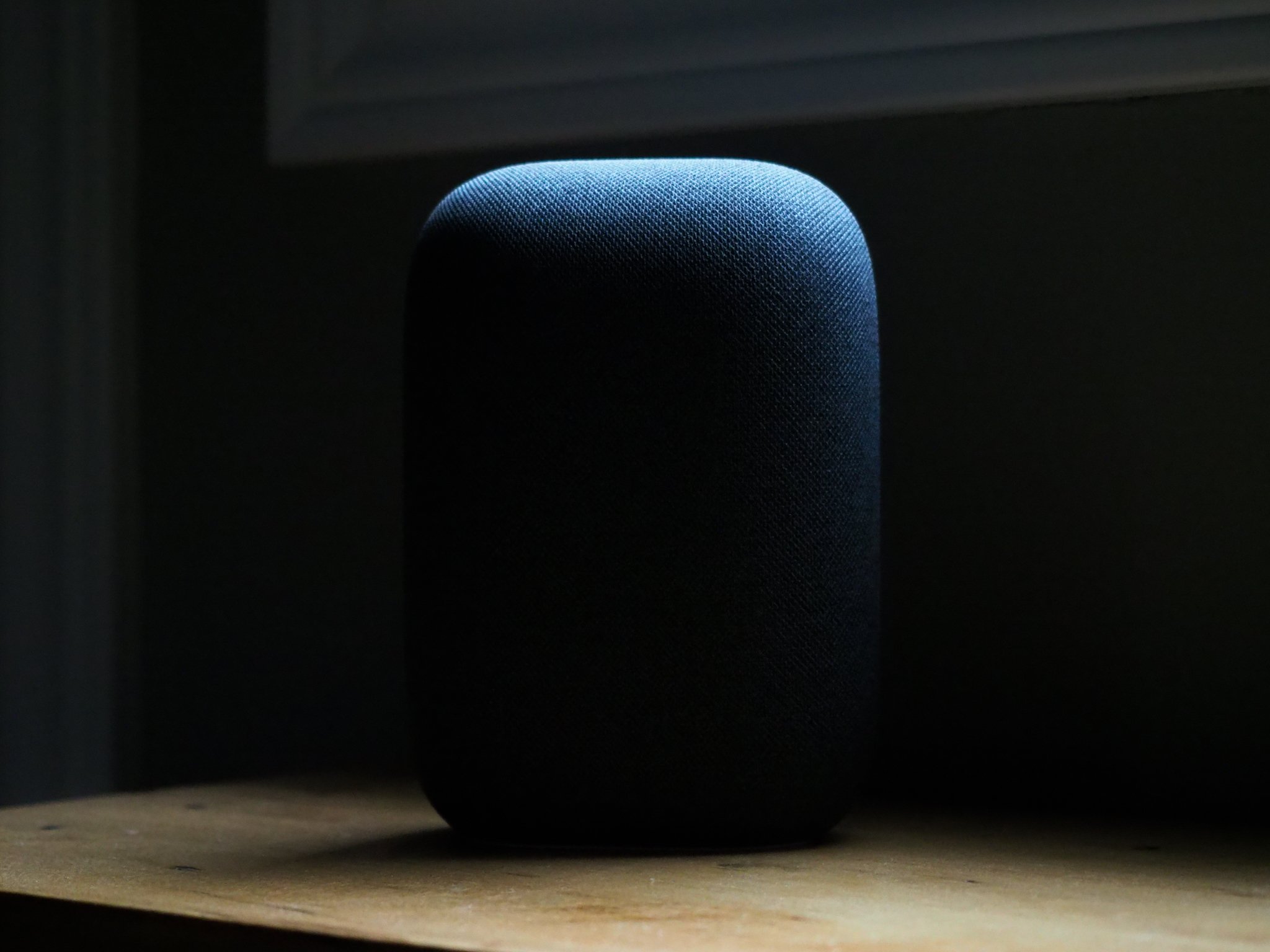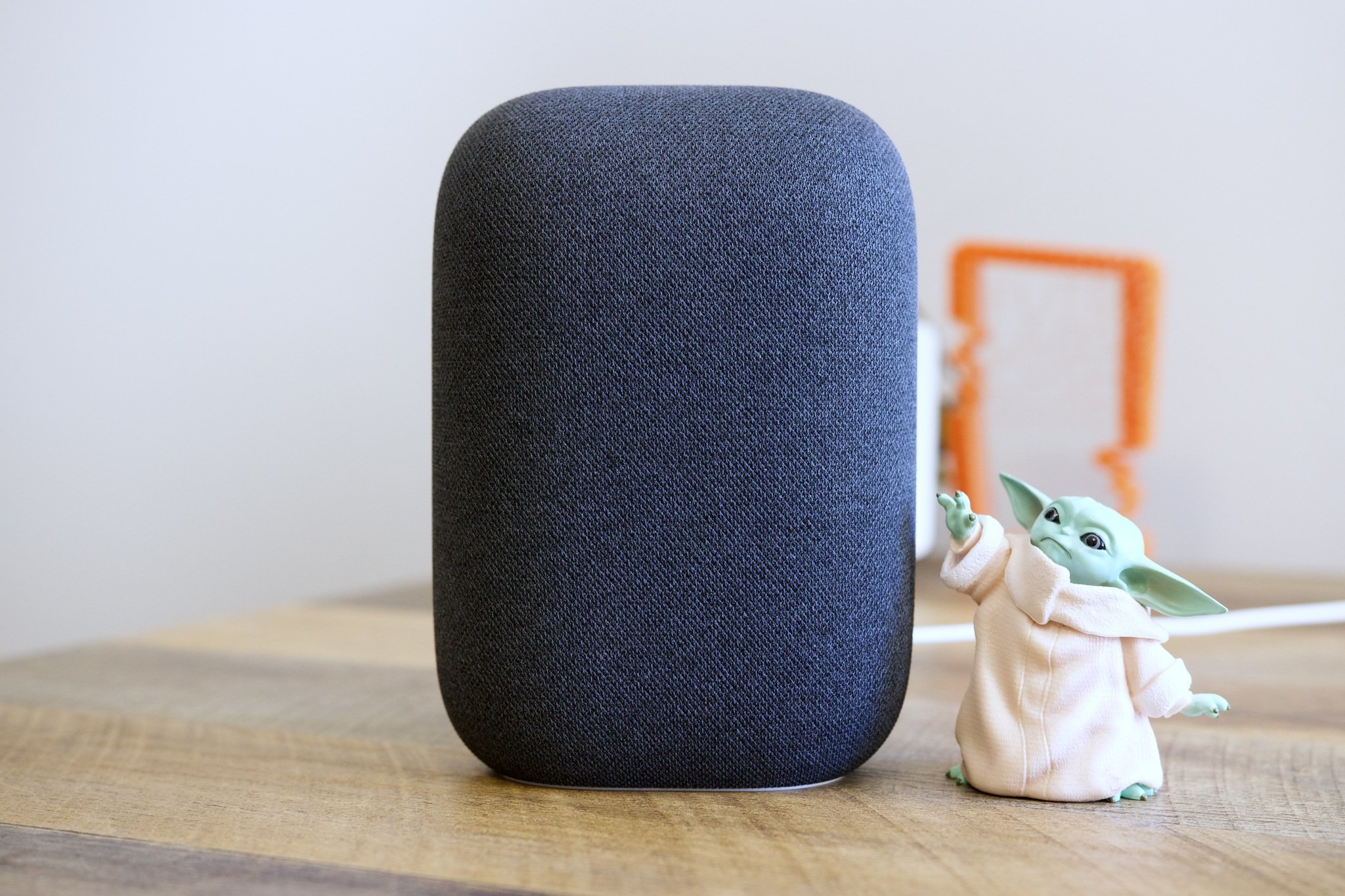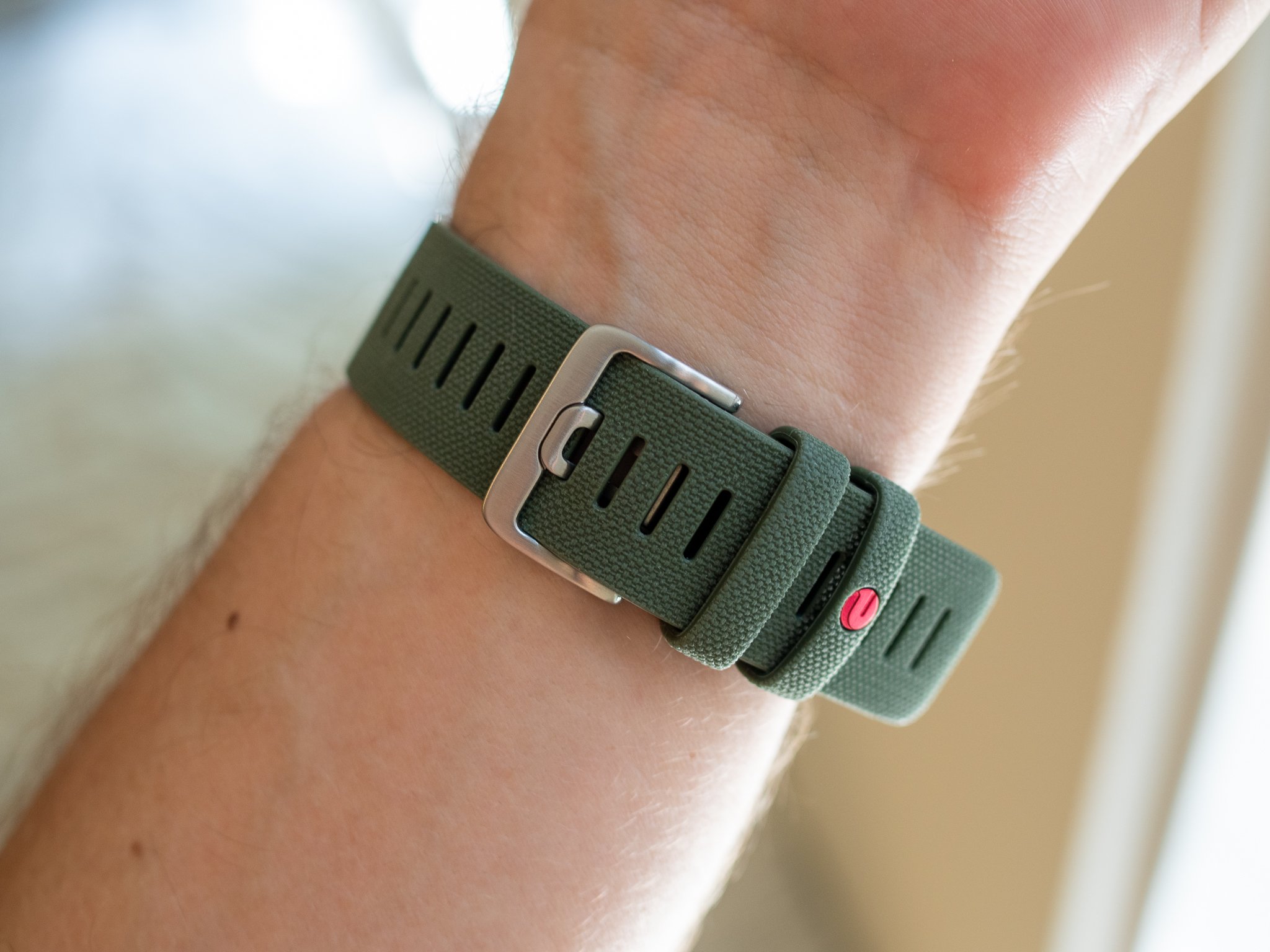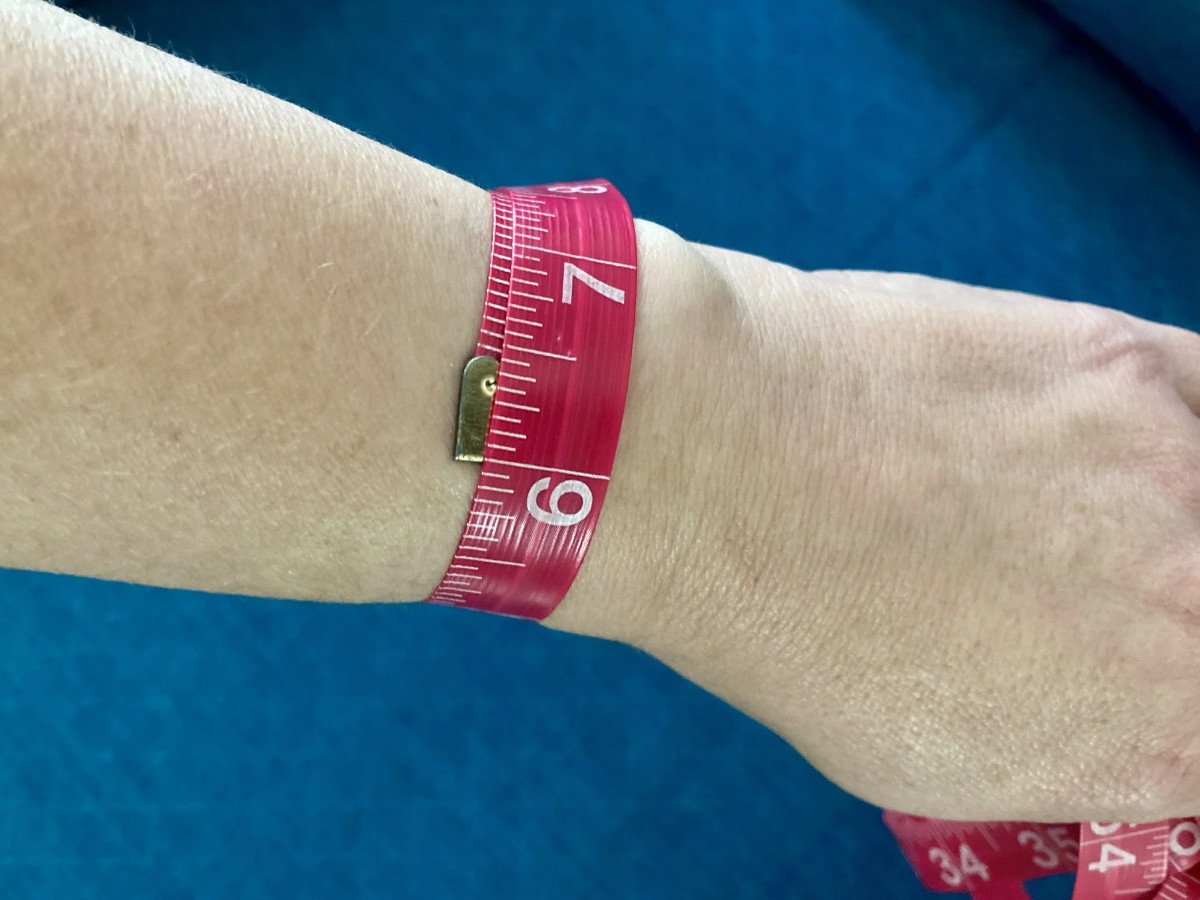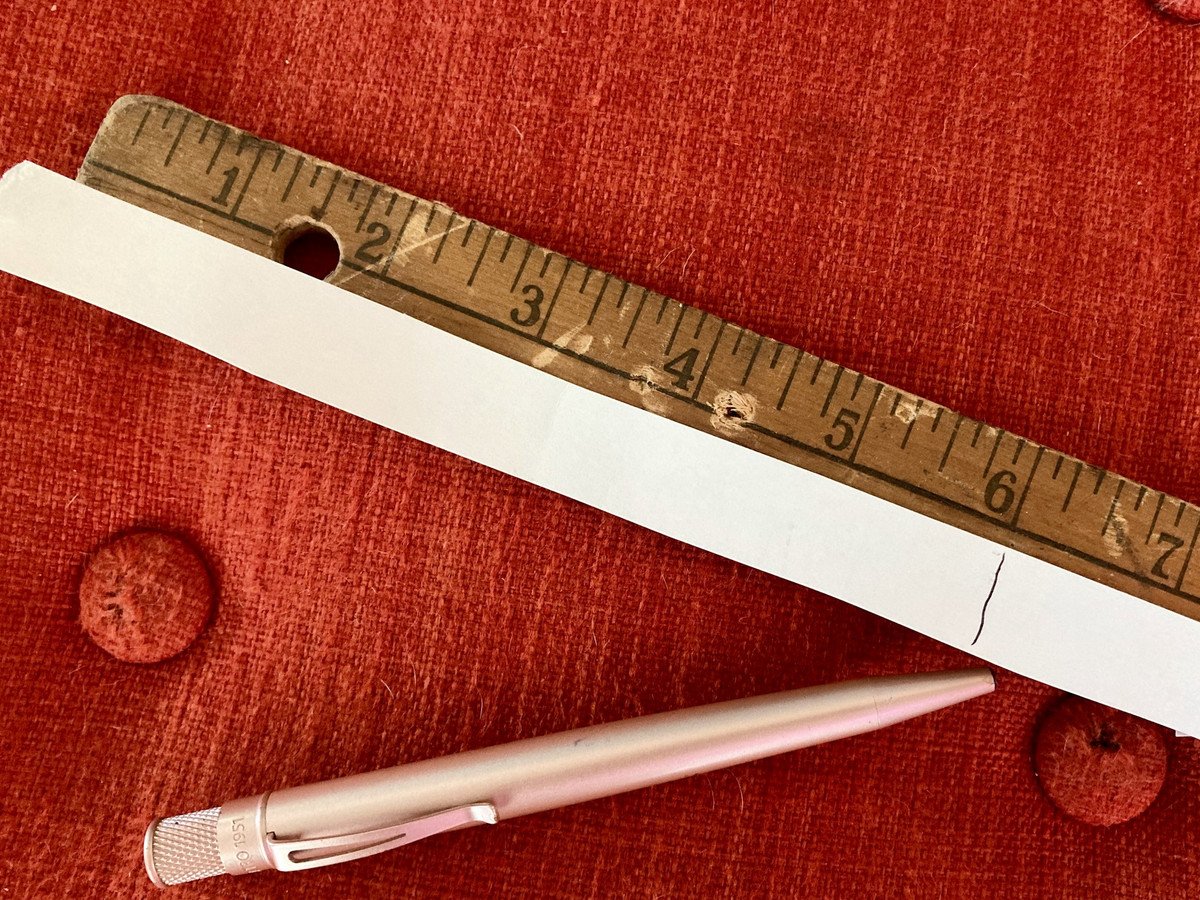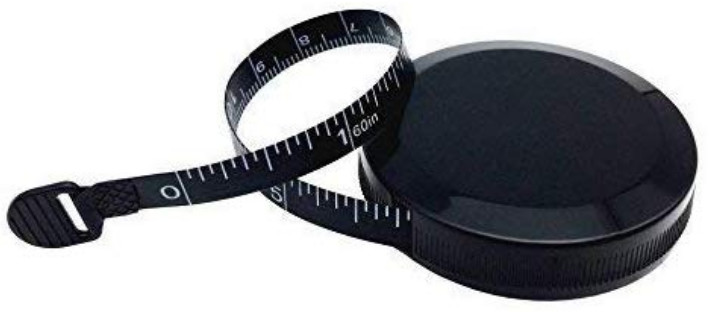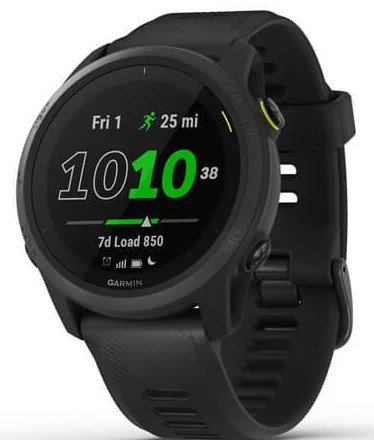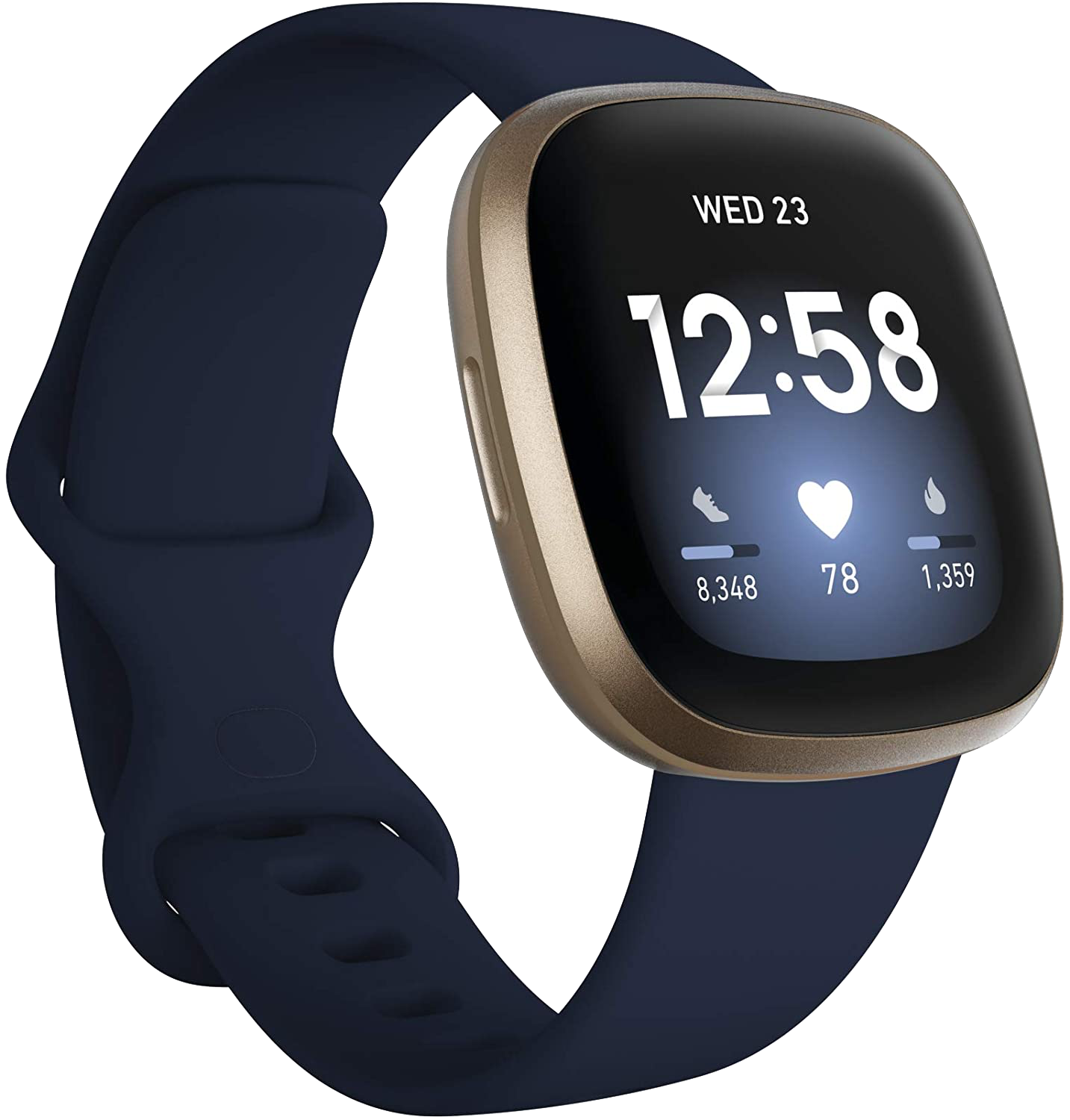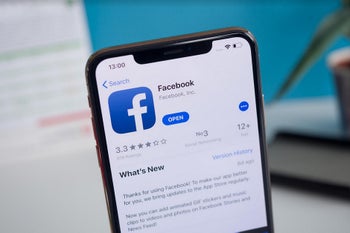
Sunday 28 February 2021
With Apple's new iOS feature expected to hurt small firms, Facebook aims to reverse the damage

Apple's supply chain hints at 1TB storage option for 5G iPhone 13 Pro models

The OPPO Find X3 Pro launch date is set to finally take on the Galaxy S21
The 10-bit color management system is making its debut on the OPPO Find X3.
What you need to know
- The OPPO Find X3 series is set to be launched on March 11.
- The Find X3 Pro will run Qualcomm's Snapdragon 888 5G chipset.
- OPPO's 10-bit color management system will debut on the Find X3.
OPPO's next flagship smartphone lineup is on the way and the company has just announced the date of its launch event. We're expecting a few phones to be unveiled including the OPPO Find X3, Find X3 Lite, and Find X3 Pro. OPPO even managed to include a few details about its higher-end Pro model which will be the cream of the crop in the company's smartphone lineup this year.
The follow-up to last year's OPPO Find X2 Pro will be powered by the Qualcomm Snapdragon 888, which will power many of the best Android phones that will launch this year. The device will mark the debut of the company's 10-bit Full-path Colour Management system that was announced late last year, making it the first Android smartphone to support a full DCI-P3 wide gamut for accurate photo capture and display calibration.
OPPO's Full-path Colour Management guarantees integrity at every point when it comes to colour. The results are true-to-life, evocative, rich visual experiences, from capture to encoding, storage, decoding, and display.
As far as the display, OPPO doesn't go into specifics, but it mentions a focus on "resolution, screen refresh rate, and high dynamic range content," which hints at what we can expect. The OPPO Find X3 has been rumored to feature a 6.7" QHD 120Hz OLED display, which OPPO seems to suggest.
OPPO also mentions high-quality photography and video, which we expect will consist of two 50MP cameras for the main and ultrawide sensors. We also expect a 2x telephoto lens and a curious 25x magnification lens with an LED ring around it. Some leaked images potentially show off what the device and its unique camera system will look like, although nothing is official until the launch date when we'll learn more about OPPO's upcoming Find X3 trio.
The launch event for the OPPO Find X3 smartphones will stream on OPPO's YouTube channel on March 11th at 11:30 am GMT / 6:30 am ET.
Verizon says that if you're having this issue, turn off 5G

Assistant smart displays can no longer show photos from Facebook and Flickr
Smart displays with Google Assistant have a few different options for what appears when not in use. They can show a full-screen clock, images from Google Photos, or an art gallery. Google also included experimental support for showing images from Facebook or Flickr accounts, but this has now been removed.
A new Reddit thread by u/big-boss_97 pointed out that the options vanished. A verified Google support employee later commented that the removal was intended, and went on to say that there are no plans to bring the functionality back.
Read MoreAssistant smart displays can no longer show photos from Facebook and Flickr was written by the awesome team at Android Police.
Google Maps adds another useful feature from Waze

The age of affordable foldables starts with this killer Samsung Galaxy Z Flip deal
 2021 is widely expected to be the year when foldable mobile devices will break into the mainstream, with reportedly working on refining, strengthening, and making these types of versatile products more and more accessible to the masses with and better specifications.
2021 is widely expected to be the year when foldable mobile devices will break into the mainstream, with reportedly working on refining, strengthening, and making these types of versatile products more and more accessible to the masses with and better specifications.
amzn_assoc_tracking_id = "phone4e4d-20";amzn_assoc_ad_mode ...
From the Editor's Desk: The Google Pixel 5a, explained
Why Google essentially building a '4a 5G Lite' would make sense, and what it could mean for the Pixel 6.
The Google Pixel 5a is coming, and people have questions.
Based on information and CAD renders leaked out by Steve Hemmerstoffer (aka OnLeaks) this past week, it seems the 5a is going to look almost identical to the Pixel 4a 5G — a phone that might be barely seven months old by the time the 5a arrives. All of which makes the successor to one of the best cheap Android phones seem like a pretty confusing proposition.
A glance down the spec sheet and a peek at the renders reveals a familiar 6.2-inch screen, dual rear cameras, rear fingerprint scanner, a hole-punch selfie camera and headphone jack. Only the dimensions are slightly different, with the 5a apparently being slightly chunkier than the 4a 5G.
If you saw these renders out of context, you'd think you were looking at a Pixel 4a 5G.
But this leak isn't as boring as you might think — and that's partly because of what we don't know yet. The phone's internal specs like processor, RAM and battery capacity remain a mystery, as does the price point Google will be targeting for 2021's affordable Pixel model.
Nevertheless, what we do know about the 5a poses the question of why this phone, launching so soon after another, almost identical phone, even needs to exist.
It's important to remember that the Pixel 4a 5G is much closer to the Pixel 5 in terms of internal hardware than the 4a — so much so, in fact, that Google wrestled with what to call the phone through much of 2020. (As we've previously reported, it's likely the 4a 5G was originally going to carry the name Pixel 5.) Despite its eventual branding, the Pixel 4a 5G is not just a Pixel 4a with 5G. Its faster CPU and camera improvements put it in the "premium Pixel" category.
There's more going on with the Pixel 5a than just a rebadged 4a 5G copycat.
That's why we shouldn't expect the Pixel 5a to just be a rebadged 4a 5G. Being the cheaper offering, we should assume it'll fall somewhere below the 4a 5G in terms of performance, even if it shares some features and physical characteristics. A decent candidate to power the phone would be Qualcomm's Snapdragon 750G — which would be an upgrade over the 4a across the board, but most importantly in terms of 5G connectivity.
In 2021, manufacturers are making 5G the standard for anything that's not a real bargain bin phone, in order to keep the carriers happy by pushing customers onto 5G plans. It's highly unlikely, then, that the Pixel 5a will ship without 5G given its likely price point. The Snapdragon 750G would be the natural choice for the phone: somewhat slower than the 765G used in the Pixel 4a 5G, but with lower power consumption.
The alleged size of the Pixel 5a is also a bit of an oddity, with Google returning to a relatively larger display after going small with the 4a. In part, the larger size could be necessary to fit in 5G antennae, especially for a millimeter wave 5G version in the U.S., which would operate at higher frequencies. However, I think the screen size — and a lot of the other similarities with the 4a 5G — can also be explained by economies of scale and Google's supply chain.
Reading between the lines, the plan seems to be to make this year's cheap Pixel essentially a Pixel 4a 5G Lite. Google will do this by reusing the display, camera modules and other internals from the 4a 5G while making savings on a cheaper processor and perhaps a smaller battery. That's not a massively exciting phone for Android nerds like us, but as a commercial product for Google's hardware division, it makes total sense. Most of the above will be components Google already has on hand.
Google risks cannibalizing 4a 5G sales, but that might not be a bad thing.
As with Pixels 3a and 4a, the exciting part about the Pixel 5a will likely be the pricing, if it's anywhere close to the 4a's very aggressive list price.
But that raises another problem. Surely there's no way Google can sell a phone like this and not cannibalize sales of the Pixel 4a 5G, right? That's true, but consider when the Pixel 5a will launch — probably sometime around the middle of the summer. That's at the point at which you'd expect Pixel 4a 5G production to be winding down, in preparation for new high-end Pixels in the fall.
If Google can offer an even more competitive 5G phone at a lower price, then it makes sense to pivot into that using a bunch of components it already has on hand. It's unlikely Pixel 4a 5Gs will be flying off store shelves after late summer anyway.
I mentioned the carriers' needs and Google's supply chain earlier since they're important factors that a lot of people overlook. The carriers in particular are very likely responsible for the Pixel 4a 5G even existing at all. It exists because, in 2020, Google needed to sell a cheap 5G phone to the carriers more than it needed to sell a bigger, higher-end Pixel to enthusiasts.
For more on that, you'll want to read my take on why there'll probably be a Pixel 6 XL in 2021.
2021 looks set to be a hugely important year for Pixel hardware.
So what about that Pixel 6 and 6 XL? Well, given that Google will be covering the "cheap 5G phone" base with the Pixel 5a, it makes more sense for the two higher-end Pixels to go back to differentiating based on screen size. And the case for a big-screened Pixel is made all the more convincing by hidden features in the Android 12 developer preview that seem very much suited to bigger screens — like the redesigned Samsung-style Settings app and rudimentary one-handed mode, tentatively named Silky Home.
However, as we've seen with the Pixel 4a, then the 4a 5G, then the 5 and especially now the 5a, Google is no longer married to any particular size of phone. So we could yet be surprised by the form this year's premium Pixels take.
That said, it is shaping up to be a big year for Android as an operating system and Google hardware in particular, with more than one reliable report suggesting a foldable Pixel is also on its way. Google's approach to phones has always been about elevating run-of-the-mill hardware through services and AI. Foldables, on the other hand, represent hardware luxury and excess — the bleeding edge of mobile technology. How Google's Pixel approach will translate to a foldable is an interesting conundrum to be tackled in the coming months — far more fascinating than the questions around this Pixel 5a.
That's it from me for a few weeks. Stay safe.
-Alex
How to watch the 2021 Golden Globes online from anywhere
The 2021 awards season is kicking off with the 78th Golden Globe Awards and we have all the details on how you can watch the awards show on TV or online.
After Ricky Gervais' controversial speech at last year's Golden Globes, the Hollywood Foreign Press Association has decided to let Tina Fey and Amy Poehler take over the hosting duties for this year's show. This will be the comedic duo's fourth time hosting the Golden Globes after they did so from 2013 until 2015.
Things will be a bit different this time around though as the show will be virtual with Poelher hosting from The Beverly Hilton Hotel in California and Fey hosting from the Rainbow Room at the top of Rockefeller Center in New York City. As a result, many of this year's nominees and winners will also be tuning in virtually to accept their awards though there will be some celebrity presenters at each location. While the Golden Globes are usually held at the beginning of January, this year's show was delayed due to the pandemic which gave its organizers extra time to arrange it.
When it comes to the television shows which have been nominated this year, Disney's The Mandalorian, CBC's Schitt's Creek, HBO's The Flight Attendant and Hulu's The Great all made the cut while fan favorites Bridgerton and I May Destroy You missed out on being nominated. Even without movie theaters being open, last year was a great year for films with Borat Subsequent Moviefilm, Hamilton, Nomadland and The Trial of the Chicago 7 all receiving multiple nominations.
Whether you're a big film buff, a TV series binge watcher or just want to see your favorite actors and celebrities tune in remotely, we'll show you exactly how to watch the 78th Golden Globe Awards from anywhere in the world.
Golden Globes - When and where?
The 2021 Golden Globe Awards will be held on Sunday, February 28 at 8pm ET/ 5pm PT on NBC. The award ceremony will run for three hours and will be held virtually in both New York City and Los Angeles. The Golden Globes pre-show will be also available to stream online and it will begin at 6:30pm ET/ 3:30pm PT.
Watch the Golden Globes from anywhere
We have all the details on how you can watch the 2021 Golden Globes in the U.S., Canada, the UK and Australia further down in this guide. However, if you want to watch the 78th Golden Globe Awards when you're away from home, then you'll run into problems as your domestic coverage online from abroad will likely be geo-blocked.
That's where a VPN (Virtual Private Network) can really come in handy. They allow you to virtually change the IP address of your laptop, tablet or mobile to one that's back in your home country which will let you watch as if you were back there.
VPNs are incredibly easy to use and have the added benefit of providing you with an additional layer of security when surfing the web. There are also a lot of options but we recommend ExpressVPN as our top pick due to its speed, security and ease of use. The service can even be used on a wide array of operating systems and devices (e.g. iOS, Android, Smart TVs, Fire TV Stick, Roku, game consoles, etc). Sign up for ExpressVPN now and enjoy a 49% discount and 3 months FREE with an annual subscription. You can even test it out for yourself thanks to the service's 30-day money back guarantee. Looking for more options?
Here are some other VPNs that are on sale right now.
ExpressVPN
See latest price at ExpressVPN
No matter where in the world you may be, a VPN is one of the easiest ways to watch the 2021 Golden Globes. Get in on this deal now!
How to watch the Golden Globes in the U.S.
If you live in the US and have a cable subscription or even a digital antenna for that matter, you'll be able to watch the 2021 Golden Globes on NBC on Sunday, February 28 beginning at 8pm ET/ 6pm PT. You can also watch the Golden Globe pre-show on its website or Twitter account beginning at 6:30pm ET/ 3:30pm PT.
Not interested in signing up for cable just to watch the Golden Globes on NBC? Don't worry as there are now a number of streaming services, all at different price points, that will give you access to the network so you can stream the 2021 Golden Globes online. We've listed a few of our favorites below to make things easier for you.
- Hulu with Live TV - $54.99 per month - As well as giving you access to NBC, the service also includes its own Hulu Originals and supports a wide variety of streaming devices.
- Sling TV - $35 per month - In order to get access to NBC, you'll have to sign up for Sling TV's Sling Blue package. The service also lets you watch on three screens simultaneously and record live TV with its Cloud DVR.
- YouTube TV - $65 per month - YouTube TV gives you access to NBC as well as over 70 other TV channels and a free 14-day trial available.
- AT&T TV Now - $69.99 per month - AT&T TV Now's Entertainment package will give you access to NBC and the service allows you to watch over 45 live TV channels. You can also record up to 20 hours of content using its cloud DVR.
- FuboTV - starting at $64.99 per month. FuboTV gives you access to NBC as well as over 80 other channels. The service also includes a 7-day free trial so you can test it out for yourself.
Watch the Golden Globes in Canada
Canadian viewers that want to tune in to watch this year's Golden Globe Awards can do so on CTV at 8pm ET/ 5pm PT as the network will air the award show at the same time as it premieres in the U.S.
Get a Golden Globes livestream in the UK
Unfortunately for UK viewers, none of the country's TV stations or streaming services will be showing the 2021 Golden Globe Awards. This means that you'll need to grab a VPN and follow the steps listed above to watch it in the UK.
How to watch the Golden Globes in Australia
If you live in Australia and are a Foxtel subscriber, you'll be able to watch the 2021 Golden Globe Awards on Fox Arena at 12pm AEDT on Monday, March 1. Alternatively, if you've already cut the cord, you can watch the 2021 Golden Globes on the streaming service Binge which costs $10 per month in Australia.
2021 Golden Globe Nominees
While you can see the full list of nominees for this year's Golden Globe Awards on the official Golden Globes website, we've listed a few of the nominees from our favorite categories below:
Best television series
- Emily in Paris
- The Flight Attendant
- Schitt's Creek
- The Great
- Ted Lasso
Best television limited series
- Normal People
- The Queen's Gambit
- Small Axe
- The Undoing
- Unorthodox
Best motion picture (musical or comedy)
- Borat Subsequent Moviefilm
- Hamilton
- Music
- Palm Springs
- The Prom
Best motion picture (Drama)
- The Father
- Mank
- Nomadland
- Promising Young Woman
- The Trial of the Chicago 7
Best Director (motion picture)
- David Fincher - Mank
- Regina King - One Night in Miami
- Aaron Sorkin - The Trial of the Chicago 7
- Chloe Zhao - Nomandland
- Emerald Fennell - Promising Young Woman
Best Screenplay (motion picture)
- Emerald Fennell - Promising Young Woman
- Jack Fincher - Mank
- Aaron Sorkin - The Trial of the Chicago 7
- Florian Zeller, Christopher Hampton - The Father
- Chloe Zhao - Nomandland
Review: 4 months later, the Nest Audio is still a smart speaker champ
In the world of Assistant vs. Alexa, the Nest Audio makes Google's case nicely.
Update, February 2021: Nest Audio, 4 months later
It's important not to overthink what the Nest Audio is, or what it's trying to be. Google isn't; it was pretty clear about that fact during the product's introduction. It's a successor to the popular 2016 Google Home, the company's original air freshener-shaped cylindrical Google Assistant-powered speaker, which was released during a very different time in the company's hardware roadmap.
It wasn't until the following year, in 2017, that the colorful, rounded-corner, fabric-covered aesthetic we know and love today was revealed in the forms of the Google Home Mini and Home Max, petite and portly versions of that original speaker designed to make the Google Assistant accessible to more home sizes, budgets, and audio enthusiasts.
In the last couple of years, there has been no shortage of Google Assistant speakers released to the market, but most of them share one thing in common: they have displays. Google's fallen in love with smart displays, all of which play music, sure, but none that exemplify the austere audio-focused mandate of the original Google Home. (Yes, 2019 saw an audio-enhancing refresh of the Google Home Mini in the form of the Nest Mini, but even its improved speaker is no match for the dynamic range of most songs released today.)
So here we are, days removed from an Amazon event that saw another reinvention of the Echo speaker, and Google has its own 2020 take on the $100 smart speaker. While it's not going to alter the conversation around affordable smart speakers, it's a solid addition to the market, and reinforces Google as a hardware maker that understands the marriage of speaker design, audio quality, and its powerful platform.
At a glance
Nest Audio
Bottom line: Google gives its original Home speaker a huge visual and audio upgrade for 2020, but the best part is the faster Google Assistant processing and support for stereo pairing.
Pros
- Excellent sound quality for the price
- Attractive, understated design
- Excellent microphone quality
- Google Assistant is very useful
- Intuitive touch controls, dedicated mute switch
Cons
- Still some software glitches
$100 at Best Buy $100 at Walmart $100 at B&H
Nest Audio review The hardware
| Category | Google Nest Audio |
|---|---|
| Dimensions | 4.89" x 3.07" x 6.89", 2.65 lb |
| Colors | Chalk, Charcoal, Sage, Sand, Sky |
| Processor | Quad Core A53 1.8 GHz with TeraOPS ML hardware engine |
| Speakers | 75mm (2.95") woofer, 19mm (0.75") tweeter |
| Wi-Fi | 802.11b/g/n/ac (2.4 GHz / 5 GHz) Bluetooth 5.0 |
Whereas the original Google Home felt like an experiment in design that happened to pay off — its top-mounted capacitive ring is still one of my favorite ways to change volume — the Nest Audio sits clearly in Google's family of fabric-covered speakers and smart displays.
In its most basic sense, it's a much smaller vertically-mounted Google Home Max, around 20% taller and 25% wider than the third-generation cylindrical Amazon Echo, and at a surprising 2.6 pounds, around 50% heavier. It also dwarfs the OG Google Home, and is even slightly taller than, though not quite as deep as, the Sonos One.
Google clearly put a lot of effort into keeping the Nest Audio compact. Its heft comes from a surfeit of metal — aluminum in the front and magnesium in the back — meant for heat dissipation and rigidity that should prevent distortion at high volumes. Other than the weight, though, you'd never know there was a metal frame inside; the whole speaker is covered in a soft woven fabric, the majority of which Google says is derived from recycled water bottles.
The Nest Audio looks, unsurprisingly, like a smaller Google Home Max
Available in five colors, I got to try the least colorful two — Chalk (white) and Charcoal (black) — but I don't think it really matters much; this is a speaker that will be cast off to the side of a room to be called upon to play music or a podcast when the mood strikes. That said, the Sage green, Sky blue, and Sand options are sure to be popular for people who do want to make the speaker a bit more prominent.
Back in July, Google teased the Nest Audio with a couple of photos and a video, in which it looked like the speaker could be used portably. Unfortunately, that was just a mirage, since the Nest Audio, like all Google speakers, is meant to be used plugged in — though it does support Bluetooth if you want to connect it directly to a phone.
Google told me that it wanted to ensure the highest-quality Google Assistant performance in every environment, making it important that, when connected to Wi-Fi, the speaker had a consistent source of power. While surely disappointing to some who were perhaps looking for a miniature version of the Sonos Move, adding a battery large enough to power the Nest Audio for ample time, even just connected to Bluetooth, would have upended the compact form factor Google achieved here.
I bring this up early in the review because, other than improvements to design and sound quality, the Nest Audio is practically no different from the original Google Home. Like the Nest Mini, there's a dedicated microphone mute switch on board, along with four LEDs that light up when playing and pausing music or changing volume. Top of the speaker also houses the capacitive touch zones: left for volume down, middle for play/pause, and right for volume up. These regions are large enough that precise placement isn't necessary, and the whole interaction model feels like Google has spent the last three years atoning for the Google Home Mini's defective touch controls.
The Nest Audio's design purposefully doesn't draw attention to itself. You may not even be able to tell it's on unless you're interacting with it.
I like the Nest Audio's design despite its near-monolithic austerity. Unlike the Amazon Echo or even the Sonos One, there are no physical buttons, or hints at button placements, unless you know where to tap. The speaker's LEDs stay unlit while audio is playing, and only maintain their presence when the rear mute switch has been activated (which, again, isn't visible unless you're looking for it). Google has learned that people would rather hear than see a speaker — which is exactly the way it should be.

What the Nest Audio is very good at, like its predecessor, is hearing its key phrases even while muttered quietly or when the music is blaring. The three far-field microphones do a fantastic job picking up even the faintest hint of a "Hey Google," quieting the current song to get a better earline to a follow-up phrase. This has always been a huge advantage of Google's first-party hardware over competitors like Sonos that integrate the Assistant into its hardware, and that's true here, too.
Nest Audio review The sound
The Nest Audio sounds good, but not amazing. That fact should be obvious, but we're used to big tech companies subverting our expectations by subsidizing their hardware to encourage ecosystem lock-in.
The promising news is that if you're coming from either an OG Google Home or a Google Home Mini or Nest Mini, this will be a big upgrade. Unlike the Alexa ecosystem, which has seen huge growth because Amazon seems willing to work with literally any company that can throw together a tweeter and a microphone, there aren't a lot of capable Google Assistant speakers. And as Google spent the last few years working with partners like Lenovo, LG, Sony, and JBL to pair speakers with screens, and even as it built out its own Nest Hub products, audio quality has never seemed like a priority.
The Nest Audio sounds much better than the Google Home, but that wasn't a high bar to reach.
On its own, the Nest Audio speaker is 75% louder, and has 50% stronger bass, than the original Google Home, according to Google. While that's immediately apparent upon first listening, it's the clarity and dynamic range that I appreciate more when comparing the two. The Google Home, praised when it was released for its room-filling fidelity, sounds muddy and boomy in comparison.
The Nest Audio has a fairly flat sound profile, not boring or lifeless, but without adding its own color to what's being played. Google says it employs its own automatic tuning algorithms to the sound profile once the speaker has been placed for a few seconds, reading the ambient noise and reverb in the room to determine how to equalize the sound. While I didn't notice a huge difference in sound signature between the speaker placed in the middle of a large room or the corner of a small one (though the results were obviously more enjoyable in the latter scenario), the Nest Audio does adjust its volume, as well as the room-thumping low-end, depending on the environment.
The speaker does very well playing most genres of music, but it will need to be equalized to increase the bass if you're going to drive really thumpy hip-hop or dance music. Still, the low-end is clean and inviting, vocals come through beautifully, and there's no sharpness or sibilance at the high-end.
I spent a lot of time listening to music on the Nest Audio, cycling between four other smart speakers: the third-gen Amazon Echo ($100, but now discontinued), the Sonos One ($199), the Ikea Symfonisk WiFi bookshelf speaker ($100), and the Google Home ($100, now discontinued).
Of those five connected speakers, the Nest Audio finds itself firmly in the middle of the pack, both in terms of overall audio quality and how it reproduces most genres of music. It's far less muddy and bass-forward than either the Google Home or the Amazon Echo, the latter of which sends audio from its tweeter upwards and its woofer down towards the floor, exaggerating its bass response as it sends music in all directions.
Google says that the Nest Audio isn't just directional, but that it's a waveguide speaker, which means the tweeter is designed to more precisely target exactly the spot the speaker is pointing. This is supposed to result in what hi-fi enthusiasts call a "sweet spot," the point in a room, relative to a speaker's placement, that ostensibly sounds the best. I actually found this to be true, almost to the speaker's detriment; given its small size and directional output, a song's musical soundstage appears narrower than on the Sonos One or Ikea Symfonisk, which have better-quality drivers and a larger enclosure, respectively.
Still, the Nest Audio holds its own, especially when playing music where it's important to hear a clear separation between the vocals and instruments; and at its higher volumes, a single Nest Audio gets the room vibrating, if not modestly thumping.
But this is clearly Google tuning its speaker for an audience that listens to just as many podcasts as top-40 hits, just as many news clips as freestyles. I think it was the right choice, too, because at half the price of a Sonos One, you're getting 90% of the performance.
The Nest Audio really has a chance to shine two units form a stereo pair.
Where the Nest Audio really excels is when paired to a second unit. Google began offering stereo pairing all the way back in 2017 with the Home Max, but at $600 that likely wasn't a very common use case. Now all of Google's first-party speakers support the feature, which physically divides the speakers into dedicated left and right channels, just as sound engineers intended. It's in this configuration the waveguide tweeters shine, building a lovely and capable little wireless speaker system for just under $200.
Nest Audio review The Google Assistant
Being a smart connected speaker, the Nest Audio has access to everything the Google Assistant has learned over the years, from requesting songs or podcasts to setting timers to asking common facts to controlling smart home gadgets and lots more. By now you likely know if you'd benefit from the addition of a smart speaker, and I'm guessing if you're considering the Nest Audio, you've interacted with the Google Assistant in some form or fashion.
Google Assistant is still better than Alexa for getting questions answered, but Amazon is improving its assistant faster than Google.
The good and bad news is that the Assistant works identically on the Nest Audio as it does on every other smart speaker connected to Google's ecosystem; there are no exclusive or unique features here. It's a competent and capable vessel to all facets of Google's ecosystem, though I did encounter a few bugs when asking Spotify to play specific albums — any album that came out in the last couple of weeks didn't appear to exist in Spotify's database, though they could manually be pushed to the speaker using Spotify Connect — but the request worked on the Google Home or Nest Mini.
Of course, like Amazon's mainline Echo speakers, the Nest Audio is in a precarious position in its parent company's ecosystem. Google gives away the Nest Mini at every opportunity — I've received and given away at least five of them over the past year — because it's a cheap entry-point to the Assistant. On the other side, Google's Nest Hub and Nest Hub Max have screens, all the better to interact with the Assistant, while also offering a handy Google Photos ambient display.
Google told me that the Nest Audio is for people who explicitly want a speaker dedicated to audio, and specifically music, where a smart display isn't appropriate and a Nest Mini isn't powerful enough. I use my Home Max in my living room for its power and a Hub Max in the kitchen for its display, but I can think of a few places around the house — my office, my daughter's room — where the Nest Audio's smaller size and lack of a display would come in handy.
Actually using the Assistant on the Nest Audio is a treat. Not only does the speaker share the same on-device processing that debuted in the Nest Mini last year, but its more powerful processor means that this is the most responsive Google Assistant has ever been on a speaker. While the Nest Audio doesn't make Assistant more likely to get the answer right — it still trips up more than I'd like — it succeeds and fails faster, and I definitely appreciate that.
Nest Audio review Competition
There aren't a lot of Google Assistant speakers on the market today, so finding apples-to-apples competition for the Nest Audio is pretty difficult. The good news is that there are many great smart speakers in the $100-200 range that give the Nest Audio a good challenge.
The Nest Audio has a few main competitors on the market, but none more so than the Amazon Echo (4th Gen). Redesigned in a new larger circular body with directional audio, Amazon promises louder sound with less distortion from its new $100 Alexa speaker, and it's stiff competition for Google's speaker.
It's not surprising that the Sonos One sounds better than the Nest Audio, but it definitely doesn't sound twice as good. There's an airiness to music that comes out of the Sonos One that feels more compressed and isolated on the Nest Audio, but they both reproduce vocals and instruments wonderfully. The Sonos One is more precise and has a cleaner, more enjoyable low-end, but not by much — and given its $200 price tag, probably not better enough.
The cheapest way to get into the Sonos ecosystem, the Symfonisk WiFi bookshelf is actually an Ikea product made in collaboration with Sonos. At $100, it puts out surprisingly good sound, with a larger enclosure that leads to a more relaxed and enjoyable sound than that of the Nest Audio. While it lacks the microphones to make it a dedicated smart speaker, it can be paired with a Nest Mini for Google Assistant routing purposes.
I'd suggest getting the Nest Audio over the Symfonisk for simplicity sake unless you already have existing Sonos speakers, but it's clear that Google probably could have spent a bit more money on the quality of the audio components without increasing the cost too much — but that would have led to a physically bigger speaker.
Nest Audio review Should you buy it?
I've grown to enjoy the Nest Audio a lot since I received a pair to test last week. It's a capable, attractive, and understated piece of hardware that will likely go on to sell very well given the success of the original Google Home.
You should buy the Nest Audio if...
You want a solid smart speaker with Google Assistant. It may sound obvious, but the Nest Audio is a no-frills speaker that focuses on audio quality. If you plan to listen to a lot of music or podcasts, and don't need the screen that comes with a smart display, this is a great option.
You should not buy the Nest Audio if...
You're looking for a hi-fi audio solution. Google increased the quality of the Nest Audio over the original Google Home, but don't expect miracles from this $99 box. It sounds good, but if you want a connected speaker with a bit more panache, grab a Sonos One.
The Nest Audio is exactly what's shown on the tin. If you're upgrading from an existing Google Home or Nest Mini speaker, it's a massive improvement; if you're moving over from an Echo, it's a more precise and less aurally colorful listening experience.
I still like Google Assistant better than Alexa, and that experience is better than ever on the Nest Audio thanks to its faster processor and dedicated on-device machine learning chip.
For $100, there are no better Google Assistant speakers for the price, and for $200 a couple of est Audios paired together in stereo mode is one of the cheapest and effortless ways to add great-sounding cloud audio to any room.
Listen to this
Nest Audio
$100 at Best Buy $100 at Walmart $100 at B&H
Big upgrade, small package
Google gives its original Home speaker a huge visual and audio upgrade for 2020, but the best part is the faster Google Assistant processing and support for stereo pairing.
Nest Audio, 4 months later review
The Nest Audio has now had around four months to find its footing and prove that it can hold its own. And you know what? It's done a damn good job of doing just that. Nothing has drastically changed with the Nest Audio since release, but as we've seen with other Google hardware like the Chromecast with Google TV, that's not necessarily a bad thing.
Google's design for the Nest Audio really caught my eye right out of the gate, and after having two of them on my desk for the past few months, I've yet to grow tired of them. The fabric design is warm and welcoming, the compact nature makes them easy to place just about anywhere, and the Charcoal color I opted for makes the Nest Audio nice and discrete.
The functionality of the design has held up just as well, with the capacitive touch controls for volume and media playback still work as expected. I thought the lack of actual buttons would prove to be an annoyance, but I've actually come around to really like the capacitive controls Google opted for.
Speaking of hardware, the 2.95-inch woofer and 0.75-inch tweeter have remained excellent for casual music listening. I agree with Daniel's initial review that the sound profile is a bit flat right out of the box, but with a bit of equalizer tweaking in the Google Home app, it's easy to adjust the audio to your liking. I should also point out that I've been using my Nest Audios in a stereo pair, which has proven to be an absolutely killer sub-$200 setup. If you can afford to splurge for two, I'd highly recommend it.
Combine all of that with excellent microphone performance and frequent sales that often bring the Nest Audio down to just $80, and this ends up being a smart speaker that we're still more than happy to recommend. Google hasn't added any shiny features or settings since launch, but everything that made the Nest Audio great still remains today. Whether you're looking to buy your first one or add to your growing collection, the Nest Audio is a strong pick for the best smart speaker in early 2021.
How to watch The Walking Dead from anywhere online
Ahead of its 11th and final season which will air later this year, The Walking Dead is returning to AMC with six new bonus episodes and we have all the details on how you can watch them on TV or online.
The post-apocalyptic zombie show based on the comic book series of the same name by Robert Kirkman, Tony Moore and Charlie Adlard first premiered back in 2010. So far there have been 10 seasons of the Walking Dead and while season 10 was originally supposed to end after episode 16, AMC decided to extend it further with the release of six all-new episodes before season 11 premieres sometime this fall.
The Walking Dead tells the story of sheriff's deputy Rick Grimes (played by Andrew Lincoln) who wakes from a coma to discover that the world has been overrun by zombies. Grimes then travels to Atlanta where he finds his wife Lori, his son Carl and a group of other survivors. The first season of the show ended up being a hit and in the years since, Rick's group has holed up on a farm, in an abandoned prison, in a safe haven called Terminus and finally in the town of Alexandria to escape the hordes of zombies known as walkers which now roam the Earth freely.
In season 10 of the show which aired last year, viewers got a glimpse of the ongoing war between the survivors and a group of villains known as "The Whisperers" whose leader Alpha controls a large horde of walkers. While Alpha was assassinated and her right-hand man Beta took control of The Whisperers, the survivors were eventually able to defeat him and the horde.
The six new episodes that make up season 10C of The Walking Dead will focus on the impact of Maggie's return and deal with the aftermath of the Whisperer War.
Whether you're a big zombie fan or have been watching the show since it first aired, we'll show you how to watch The Walking Dead season 10C from anywhere in the world.
The Walking Dead season 10C - When and where?
The Walking Dead season 10C will premiere on AMC on Sunday, February 28 at 9pm ET/PT. The show's extended 10th season will feature six all-new episodes which will air weekly at the same time.
Watch The Walking Dead from anywhere
We have all the details on how you can watch The WalkingDead in the U.S., Canada, the UK and Australia further down in this guide. However, if you want to watch the extended 10th season of the show when you're away from home, then you'll run into problems as your domestic coverage online from abroad will likely be geo-blocked.
That's where a VPN (Virtual Private Network) can really come in handy. They allow you to virtually change the IP address of your laptop, tablet or mobile to one that's back in your home country which will let you watch as if you were back there.
VPNs are incredibly easy to use and have the added benefit of providing you with an additional layer of security when surfing the web. There are also a lot of options but we recommend ExpressVPN as our top pick due to its speed, security and ease of use. The service can even be used on a wide array of operating systems and devices (e.g. iOS, Android, Smart TVs, Fire TV Stick, Roku, game consoles, etc). Sign up for ExpressVPN now and enjoy a 49% discount and 3 months FREE with an annual subscription. You can even test it out for yourself thanks to the service's 30-day money back guarantee. Looking for more options?
Here are some other VPNs that are on sale right now.
ExpressVPN
See latest price at ExpressVPN
No matter where in the world you may be, a VPN is one of the easiest ways to watch The Walking Dead. Get in on this deal now!
How to watch The Walking Dead season 10C in the U.S.
If you live in the U.S. and have a cable subscription, you'll be able to watch new episodes from The Walking Dead's extended 10th season on AMC every Sunday at 9pm ET/PT. Alternatively, you can also watch new episodes of the show a few days earlier by signing up for AMC Plus. AMC Plus is a standalone streaming service which costs $6.99 per month and gives you access to shows from AMC, Sundance Now and Shudder. If you do decide to sign up for AMC's streaming service, you'll be able to watch new episodes from The Walking Dead season 10C every Thursday before they premiere on Sundays.
Not interested in signing up for cable or AMC Plus just to watch The Walking Dead? Don't worry as there are now a number of streaming services, all at different price points, that will give you access to AMC so you can watch new episodes of the show online. We've listed a few of our favorites below to make things easier for you.
- Hulu with Live TV - $54.99 per month - As well as giving you access to AMC, the service also includes its own Hulu Originals and supports a wide variety of streaming devices.
- YouTube TV - $65 per month - YouTube TV gives you access to AMC as well as over 70 other TV channels and a free 7-day trial is available.
- Philio - $20 per month - Philio gives you access to AMC and 60 other live TV channels for just $20 per month. The service also includes unlimited DVR so you can record your favorite shows and there is a 7-day free trial so you can test it out for yourself.
- Sling TV - $35 per month - In order to get access to AMC, you'll have to sign up for Sling TV's Sling Orange package. The service also lets you watch on three screens simultaneously and record live TV with its Cloud DVR.
- FuboTV - starting at $64.99 per month. FuboTV gives you access to AMC as well as over 80 other channels. The service also includes a 7-day free trial so you can test it out for yourself.
Watch The Walking Dead season 10C in Canada
Canadian Walking Dead fans will be able to watch new episodes of the show from season 10C on AMC Canada if the channel is included with their cable package. Thankfully though, The Walking Dead airs at 9pm ET/PT on Sundays just like it does in the U.S.
How to watch The Walking Dead season 10C in the UK
If you live in the UK and have a Sky subscription, you'll be able to watch new episodes from The Walking Dead Season 10C every Monday at 9pm GMT on Fox TV.
Don't want to sign up for a contract with Sky but still want to watch The Walking Dead online? No worries as Now TV's Entertainment Pass will let you watch the show for £8.99 per month. The service also offers a 7-day free trial so you can test it out for yourself to watch the extended 10th season of The Walking Dead.
Stream The Walking Dead season 10C in Australia
Australians that want to catch new episodes from The Walking Dead season 10C can do so on Binge. The streaming service costs just $10 per month but like in the UK, you'll have to wait until Monday to watch The Walking Dead in Australia.
This dimmable TaoTronics desk lamp down to $43 has a Qi wireless charger
Sometimes it's nice to have just one device that accomplishes several different goals at once. You can get that in this TaoTronics LED desk lamp, which is on sale for $43.34 at Amazon. While there was a time in this lamp's life that it sold for around $50, it has been selling at $60 or more for most of the past year. Unfortunately, a lot of devices jumped in price in 2020 thanks to the global pandemic, but it's nice to see some of them coming back down. And today this lamp has come down to the second lowest price we've ever seen.
The LED desk lamp has just a ton of different features. Let's talk about the lamp aspect first. It emits an even glow with flicker-free LED lights. There are five different customizable color temperature settings and five brightness settings so you can get the light just perfect for your mood or your environment. Create the ideal atmosphere for whatever you're doing.
The lamp is also easily adjustable thanks to a rotating base and adjustable body. It's flexible and capable of providing an even larger lighting area when you need it. The whole thing is foldable, too, so you can take it with you or save some space when necessary. This makes it great for smaller areas, too, like a dorm or apartment or desk with little room to spare.
What else can the lamp do? Well, for one thing that base has a Qi wireless charger built into it. You can charge any Qi-compatible device. It uses RAVPower's HyperAir technology for a fast charge and can deliver up to 7.5W power for iPhone devices and 10W for Samsung devices. If you don't have a wireless charging device or just need to charge more than one thing, there's also a 5V USB-A port built into the base.
You can light up your room, charge one device wirelessly, and keep another plugged in all from this one lamp. Other features include a one-hour timer so you can use it as a night light and a memory function so the lamp will remember its brightness setting the last time you turned it on.
Get the most out of your Galaxy S21 Ultra with these 10 apps and features
The Galaxy S21 Ultra is the best smartphone I've ever used. Taking all of the good points from last year's S20 Ultra and fixing many of the complaints, this device is an absolute powerhouse. To paraphrase Uncle Ben, with great hardware comes great flexibility, and as such, there are plenty of apps and resources you can use to make the most of your shiny new phone, and here are 10 of our favorites.
Read MoreGet the most out of your Galaxy S21 Ultra with these 10 apps and features was written by the awesome team at Android Police.
Wyze Robot Vacuum review: Better than it has to be at this price
Wyze has made its name in the US by offering competent smart home hardware for startlingly little money—$20 for a camera, $50 for a smart thermostat, and so on. The $250 Wyze Robot Vacuum is by far its most expensive product, but it's still cheap compared to the competition. This device sports full 3D mapping, scheduling, and it's got an app that isn't terrible. Most importantly, it does a very good job cleaning, assuming you don't mind a little noise.
Read MoreWyze Robot Vacuum review: Better than it has to be at this price was written by the awesome team at Android Police.
12 new Android games from the last week: The best, worst, and everything in between (2/22/21 - 2/28/21)

Welcome to the roundup of the best new Android games that went live in the Play Store or were spotted by us in the previous week or so. Today's list is broken up into several segments, ranging from best, average, to mediocre. So whether you're looking for the best games of quality or are simply looking for the latest free-to-play gacha titles, you're covered. This week I have a gorgeous hand-drawn puzzler, an enjoyable digital adaptation for the board game Fury of Dracula, and a minimal word game that offers a relaxing atmosphere.
Read More12 new Android games from the last week: The best, worst, and everything in between (2/22/21 - 2/28/21) was written by the awesome team at Android Police.
The UE Hyperboom Bluetooth speaker has dropped to a new low price of $341
The UE Hyperboom portable Bluetooth speaker is the best big Bluetooth speaker around. For the first time since it came out in early 2020, it is on sale for $340.99 at Amazon. That's down from its usual price of $400. The sale price is also available at other retailers like Best Buy. Of course if you look in the wrong spot you'll actually find it going for way more than even its normal street price, like at Walmart where it's nearly $500.
The Hyperboom is one of UE's newest speakers, and it's designed to be the big, bass-producing, music-blasting speaker that you need in a system that's still compact enough to be portable. You'll get loud, pristine sound mixed with Ultimate Ears technology that really helps boost the bass for a rich blend of audio no matter what music you prefer.
You can connect up to four devices to the Hyperboom at once. Two of them can connect via Bluetooth. Then you can always add a third via the auxiliary port and a fourth via the optical input. Switch between whatever devices you have connected with the push of a button.
The battery life on this speaker is good for up to 24 hours. You'll easily be the life of the party and stay in control of the music the entire time since this speaker's battery life won't fade. It's easily rechargeable as well, and even if the battery gets low it's easy to plug in and keep it going. There's even a USB port so you can charge your phone using the Hyperboom's battery, which is great if the phone happens to be the music source at the time.
The Hyperboom's adaptive equalizer can automatically adjust to the music you play and the environment you're in. You'll get pitch-perfect sound no matter what. The IPX4 rating will help protect it against splashes and spills, too, so you don't have to constantly keep an eye on it.
Here's how to save 50% on the upcoming Paramount Plus streaming service
Debuting March 4, Paramount Plus is quickly gearing up to compete with top streaming services like Netflix and Disney+. Just this past week, ViacomCBS announced a slew of exclusive TV series and films that will be premiering on Paramount Plus, from reboots of popular TV series like Rugrats and BET's The Game to series adaptations of Paramount films like The Italian Job and Grease, as well as new films like The Quiet Place II and Mission: Impossible 7 coming to the service 45 days after their theatrical release. Starting at $4.99 per month, the service is a rebrand of CBS All Access while offering even more content at $1 less per month for its base plan.
Paying annually is always a better option at CBS All Access as you're able to save a bit extra on the total cost and won't have to worry about a monthly bill. Right now though, it's an even smarter way to join. Through March 3, you can get your annual subscription to Paramount Plus for only $29.99 when you use promo code PARAMOUNTPLUS while signing up at CBS All Access! At 50% off the regular cost, it's likely to be quite some time before we see an offer like this again.
With today's deal, only the Limited Commercials plan drops to $30 while the Zero Commercials plan is priced at $50. What's a year spent not watching commercials worth to you? The other benefit that Zero Commercials plan includes is the ability to download up to 25 episodes for offline viewing, which is unavailable on the more affordable plan.
While this deal is only available before Paramount Plus launches, you'll immediately gain access to the CBS All Access streaming service upon signup. Paramount Plus is bringing over everything from CBS All Access when the switch occurs on March 4 so you can continue watching original shows like Star Trek: Discovery and The Good Fight, content from networks like BET, MTV, Comedy Central, Nickelodeon, and CBS, along with an influx of Paramount films, new shows, and more.
Best of all, the service will be available to stream on Android and iOS devices, as well as Roku and Fire TV devices so you can catch up on your binge-watching sessions anywhere you go. Our guide on everything you need to know about Paramount Plus can help answer any other questions you might have before signing up.
Grab a pair of Plantronics Backbeat Fit 350 Bluetooth headphones for $40
We regularly watch for the best Bluetooth headphones under $50, and the Plantronics Backbeat Fit 350 don't normally count because they regularly sell as high as $60 and even $80 at some retailers. Right now you can get these great Bluetooth headphones for $39.99 at Best Buy and while price-matched at Amazon. This is one of Best Buy's deals of the day, so you'll want to act fast before the price expires.
Looking for an easy pair of headphones to take with you to the gym? That's what the Backbeat Fit 350 would be good for. They use Bluetooth 4.1 technology so you get low power consumption and no interuptions while you're streaming your favorite tunes. They pair simply and easily with any of your Bluetooth devices.
You'll also get a six hour battery life that will last for up to 240 hours in standby mode, so you can toss them in your bag without needing to worry about recharging them before you hit the gym at the end of the day. You can count on them to still be working when you head out for the day.
The headphones are IPx5 rated, which means they have a resistance to water. That includes sweat when you're going hard on the treadmill or something like rain, like if you get caught in a downpoor while waiting for some transportation.
The in-line controls include a microphone for hands-free talking, volume adjustment, the ability to skip tracks, and even a way for you to access a voice assistant like Siri or Google Assistant. The earloops are designed to fit securely on your head and come with eartips and stabilizers that help ensure a perfect, long-lasting, and comfortable fit. Even while you're working out as hard as possible, the Backbeat Fit 350 won't fall off.
Here's how to measure you wrist for a smartwatch
When it comes to finding the best Android smartwatch, there are various factors you'll want to consider. For starters, you'll need to think about what features you want, what operating system you prefer, what design you're seeking, and what size smartwatch is best for your wrist. There are a few different ways to go about this. Your method of choice will depend on what watch you're interested in and what equipment you have available. Here are a few simple tips on how to measure your wrist for smartwatches.
How to measure your wrist with a tape measure
While most manufacturers will provide a general size range for the watch you're considering, you may have the option of buying bands in different sizes that will better accommodate your wrist. The best way to go about this is to use a fabric tape measure to figure out the circumference of your wrist. Some companies offer a printout guide that you can use in place of a tape measure.
- Wrap the tape measure around your wrist. Be sure not to pull it too tight. It should feel comfortable but not too loose.
- Make a note of the measurement.
- Compare your measurement to the manufacturer's sizing guide.
- Pick the smartwatch size that best matches your wrist's measurement.
How you go about measuring your wrist is up to you. If you don't happen to have a tape measure available, you can easily access one of the printout guides from the manufacturer if they provide one. If not, you can always go old-school and use a ruler, paper, and pen to find your measurement.
How to measure your wrist with a ruler, paper, and pen
- Cut a straight strip of paper about one-half inch wide.
- Wrap the paper around your wrist. Again, you shouldn't pull it too tight. It should fit comfortably but not feel too loose.
- Mark the spot on the paper where one end of the strip overlaps the other side of the strip.
- Lay the strip of paper on a flat surface.
- Use the ruler to measure from the end of the strip to the spot you marked. Note your measurement.
- Pick the smartwatch size that best matches your wrist's measurement.
Whether you've got your eye on a Samsung smartwatch, Fitbit smartwatch, or a Garmin smartwatch, measuring your wrist is easy enough. You can also explore third-party bands that come in different sizes to ensure you have the perfect fit. There are plenty of excellent options out there, like the Garmin Forerunner 745 for advanced fitness tracking and the Fitbit Versa 3 for everyday tracking. All you have to do is measure your wrist!
Measure your wrist
RayTour Tape Measure
Get those measurements
When you need a measuring tape that's flexible, durable, and accurate, RayTour has got you covered. It measures up to 60 inches, so it's plenty big for measuring your wrist. You get clear markings for both inches and centimeters.
Spend more, do more
Garmin Forerunner 745
$495 at Amazon $500 at Walmart $500 at B&H
Advanced fitness tracking
When you want to go deeper, the Garmin Forerunner 745 is a tremendous fitness smartwatch. It offers great battery life, which is ideal for athletes who are always on the run. It's pretty expensive, but it's for advanced users who need endless details.
Great value
Fitbit Versa 3
$230 at Amazon $230 at Best Buy From $229 at Walmart
Get fit with Fitbit
If you don't want to spend a fortune, the Fitbit Versa 3 is a great mid-range option. You get plenty of features such as built-in GPS and NFC payments. Let's not forget about the new and improved health sensors. It's perfect for casual fitness tracking.

